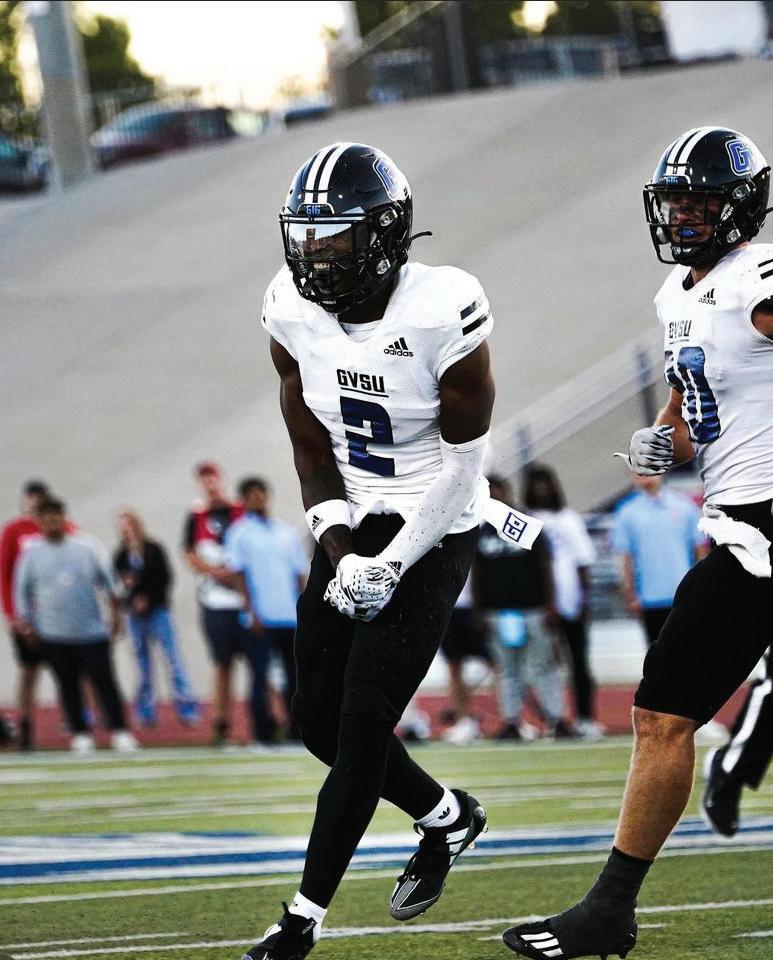

Stolen Thunder

GVPD reflects on alcohol sales, attendee conduct at first football game
BY JOSEPH POULOS LANTHORNEDITORIAL@GVSU.EDU
When Grand Valley State University announced the sale of alcoholic beverages at Lubbers Stadium and the release of the University’s canned cocktail collaboration, questions were raised about alcohol’s impact on football games. However, GVSU’s Department of Public Safety seems to be pleased with the behavior of students and football game attendees, amidst the recent sales of alcohol on campus.
Captain Kourosh Khatir, the assistant director of public safety at the University, said the department’s preparations for the season’s first football game on Sept. 5 were largely successful.
“We have a comprehensive security plan for all of our football games and this year is no exception,” Khatir said. “The game went well from a security standpoint, (as) no major issues were reported.”
With the recent implementation of alcohol sales at sporting events, Khatir made sure to remind students that their own vigilance of substance consumption is the key to their safety.
“If you decide to drink, be responsible with alcohol and other drugs, and don’t engage if you are not of age,” Khatir said. “As always, it takes the whole campus community to
keep everyone safe, it is not solely the responsibility of the police department.”
Khatir said this awareness of one’s surroundings can be applied to all situations, not just sporting events where alcohol consumption is present. He also reminded students that their belongings need to be cared for as well.
“Larcenies continue to be our number one call for service,” Khatir said. “Lock up your valuable items and make sure you have a trusted person watching your belongings should you be away from them for any length of time.”
From a statistical standpoint, Khatir explained there is no evidence that points toward a negative impact of alcohol sales on campus, at least as far as citations and incidents go. At the moment, alcohol sales have not seemed to contribute to any increased instances of unlawfulness on campus.
“There was no discernible uptick in MIPs when comparing the beginning of the semester last year to the same timeframe this year,” Khatir said. “(There were) 16 for 2023, and 10 so far for 2024.”
With the semester still at its beginning, time will only tell as to the long-term impact of alcohol sales at on-campus athletic events.
Khatir noted that ample planning and consideration was made by GVSU
administrators in regards to the sale of alcohol on campus.
“A lot of thought and effort goes into making decisions that have a campus-wide impact,” Khatir said. “GVPD stands ready to respond and, support the University’s mission, no matter the relevant alcohol policies decided by senior leadership.”
Chief Brandon DeHaan of the GVSU Department of Public Safety echoed many of Khatir’s sentiments, but also pointed out the positives associated with selling alcohol in the stadium, as compared to its overconsumption at tailgate parties.
“This will be our first full year of selling alcohol at the stadium,” DeHaan said. “Quite frankly, the concessions area we had was undersized for decades, considering the size of crowds we bring in. That really upped our game as far as our ability to sell all kinds of concessions down there.”
DeHaan said he places his trust in the faculty that planned and considered the sale of alcoholic beverages and new concession areas.
“They (staff) created a point of sale in the upper deck area for alcohol,” DeHaan said. “That was an initiative that occurred over the summer and it really came out very nice.”
DeHaan said he supports the sale of

alcohol on campus. He said selling alcohol on campus allows students to consume in a safer environment that can be monitored much more closely than previous parking lot tailgating allowed for.
“I have been supportive of the alcohol sales in our stadium for quite some time,” DeHaan said. “There has been some anecdotal evidence that has shown over the past decade or so at higher education institutions (that) the sale of alcohol in stadiums has reduced binge drinking in parking lots.”
DeHaan stated that in comparison, drinking at parking lot tailgate parties is more dangerous, mentioning the prevalence of overconsumption. He said the new regulations offer a safer option for students who wish to consume alcohol at athletic events.
“A lot of what we’ve seen in the past is that students would engage in binge drinking, consuming vast amounts of alcohol in very short amounts of time because they were unable to do so in the stadium,” DeHaan said. “(Considering the change), I’m hopeful this year will see the same type of positive activity (the reduction of binge drinking at tailgates) that other institutions of higher education have seen.”
Tailgating has not completely disappeared, however, and will likely remain a popular recreational activity and pregame ritual.
DeHaan also attributes public safety successes to the concession staff’s adherence to safety standards and state laws for serving alcohol.
“All the servers have been tiptrained,” DeHaan said. “They have undergone specific training to ensure that we are not serving minors and those that are intoxicated. We have taken a lot of effective measures to prevent underage drinking and consumption.”
While the sale of alcoholic beverages at sporting events seems here to stay, the GVSU Department of Public Safety remains committed to ensuring the well-being of fans and students alike. According to DeHaan, there is a strong feeling among the department that safer consumption will go a long way toward accomplishing their goal.
“Our fans appreciate the option,” DeHaan said. “It makes sense to consume alcohol over a longer period of time, instead of consuming vast amounts in a very short amount of time, which, quite frankly, can be very dangerous. I’m hopeful that overall, this will help reduce the negative behavior involved with binge drinking.”
Laker
A&E

MORGAN MANN BUSINESS STAFF
Business Manager BRENDAN BUTTERFIELD
Distribution Managers DALLAS MATHEWS REAGAN RUD MALIK IMMOOSMA
At the Lanthorn, we strive to bring you the most accurate news possible. If we make a mistake, we want to make it right. If you find any errors in fact in the Lanthorn, let us know by calling 616-3312464 or by emailing editorial@lanthorn.com.
The Grand Valley Lanthorn is published biweekly by Grand Valley State University students 17 times a year. One copy of this newspaper is available free of charge to any member of the Grand Valley Community. For additional copies, at $1 each, please contact our business offices.
Help
or
compostable. POSTMASTER:
Africana Studies program announces Afrofuturism course
BY MAX BUFKIN LANTHORNEDITORIAL@GVSU.EDU
Grand Valley State University’s Africana Studies program, previously the African/African American Studies program, is launching a new course for the Winter 2025 semester that will explore “Afrofuturism” through science fiction. The course, Afrofuturism and Society (AAA-380), will explore concepts of identity through science fiction, and will fulfill the U.S. Diversity requirement for students.
According to the promotional flyer for Afrofuturism and Society, the class will “celebrate Black science, fight scientific racism and imagine African American futures.”
Professor Steven Nathaniel from the Brooks College of Interdisciplinary Studies designed the course based on years of research on Afrofuturism. The class will focus on the intersection between African American history, art, technology and literature, with an emphasis on science fiction.
According to Nathaniel, science fiction can be a way to reflect on and process the history of African American life. Nathaniel also said the course will use the lens of science fiction to imagine equitable futures.
“Science fiction is a way of telling history, but it’s also about envisioning the future,” Nathaniel said. “(Afrofuturism is) where African American culture has come from, and it’s (Afrofuturism) where it’s going as well. Both Looking backward and looking forward are happening almost all (of) the time.”
Afrofuturism and Society will use an interdisciplinary approach to education, combining several different disciplines to teach the subject. The coursework will involve analyzing the graphic novel version of “The Parable of the Sower,” which was originally written by renowned Afrofuturist writer Octavia Butler.
The coursework will also include listening to music and watching films. A modern example of Afrofuturism can be seen in the Marvel comics series and feature film “Black Panther,” which depicts a futuristic African country with the most developed technology in the world. Nathaniel intends to screen “Wakanda Forever,” the sequel to the “Black Panther,” during class. Nathaniel is also considering screening Jordan Peele’s sci-fi horror film “Nope.”
“One of the most prominent or common accusations against fantasy or literature is that it’s used for escaping,” Nathaniel said. “I’ve always been on the side that shaping imagination is what prepares people for facing reality.”
According to Nathaniel, the course will address
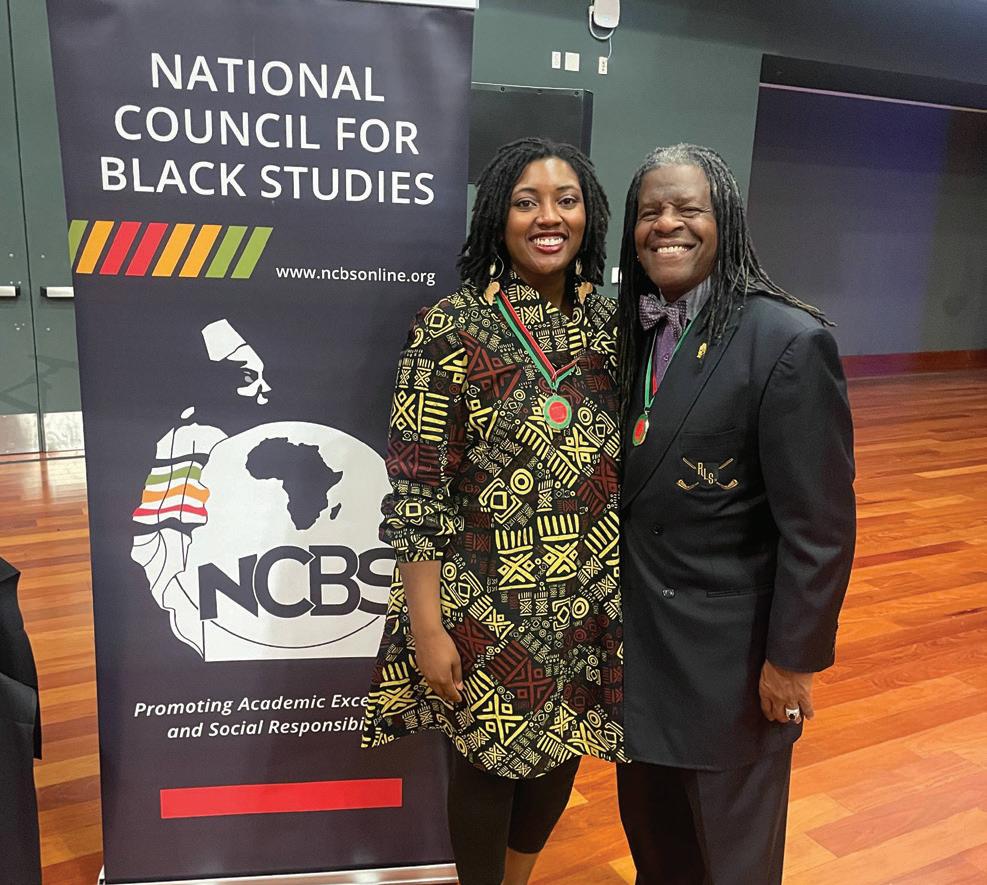
historical trauma and examine the relationship between African American life and science. Racism and oppression have kept the truths of African history and science from history books, and other discoveries or accounts have been ignored altogether as a result of systemic racism. In this context, Nathaniel said Afrofuturism can be healing because Black innovators are able to utilize it to understand the truths of history while inventing new futures.
Cultural critic Mark Dery is credited with coining the term “Afrofuturism” in 1993. Since the beginning of modern science fiction in the early nineteenth century, Afrofuturism has been prominent in African American art, music and literature. Many universities, including the University of Chicago and the College of Creative Studies in California, have implemented courses on Afrofuturism.
Mary Williford, the lead administration assistant of the School of Interdisciplinary Studies, said Afrofuturism is prominent from its filling a gap in science fiction.
“As a GVSU staff member who works closely with the Africana Studies program, I think Afrofuturism and Society is a unique opportunity for our students to learn more about the endless possibilities of media, fiction and fantasy,” Williford said. “The fact that Afrofuturism exists tells us that the broader genres of sci-fi and fantasy were not quite sufficient for creators to express their vision of the future.”
The Afrofuturism and Society course will be taught from 1:00-2:15 p.m. on Tuesdays and Thursdays throughout the 2025 Winter semester.
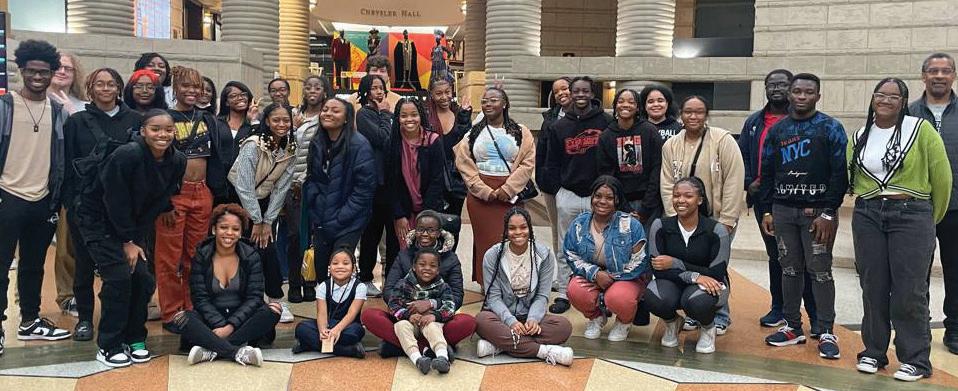
VOL. 59 NO. 3
CULTURE: New course allows students to further explore their culture and its impacts on their identities. COURTESY | GVSU
MEDIA: Examining the coverage of culture. COURTESY | GVSU

GV rowing team celebrates sixtieth anniversary
BY OLIVIA MULKA LANTHORNEDITORIAL@GVSU.EDU
Grand Valley State University’s oldest sport, rowing, celebrated its sixtieth anniversary, by holding an anniversary celebration on Sept. 7 at the GVSU Alumni House and Visitor Center. Current team members, coaches, alumni and supporters of the “Laker Navy” community were invited. The team took the opportunity to “christen” three new boats, and learn about the history of the rowing team. Alumni also got to relive their days of college rowing by going back out onto the water.
The rowing team was created in 1964 as GVSU’s very first competitive sport. Since its establishment, the team has won an array of championships, and ranks among the best rowing teams in the country.
Brendan Butterfield, the treasurer of the rowing team, said the celebration had an incredible turnout.
“The sixtieth (anniversary) was an amazing event for alumni and supporters of the program,” Butterfield said. “There were (alumni) from all the decades before us in attendance.”
“Many of our athletes meet some of their best friends rowing and many athletes live together. Personally, rowing has given me a way to detox from the stress associated with classes.”
Butterfield has been rowing for eight years. He started rowing in high school, and then joined GVSU’s team as a freshman. Butterfield said rowing allowed him to form a community, and was a significant reason he decided to attend the University.
“As a freshman right after the pandemic, the rowing team was an instant in for someone looking to make friends,” Butterfield said. “Many of our athletes meet some of their best friends rowing and many athletes live together. Personally, rowing has given
me a way to detox from the stress associated with classes.”
Another member of the rowing team, Reece Thurston, said rowing builds community.
“The rowing team has allowed me to meet many new people, and feel a sense of belonging here at GVSU,” Thurston said. “Some of my best friends are on the team, and attending practice gives me something to look forward to every single day.”
Elements of teamwork and friendship have played an essential role
throughout the team’s history. Rowing alumnus Trevor Robert said he not only met a close group of friends, but also his life partner through the sport.
Robert started rowing at GVSU as a sophomore in 2018, but his time on the team was cut short due to the COVID-19 pandemic. His future wife played on the women’s rowing team at the time, and the two met on a team camping trip. Robert and his wife recently celebrated their wedding.
“I thought she was cute (and) kinda fun,” Robert said. “(I) started talking to her and the rest is history. In (our) wedding, two of my groomsmen were from the rowing team. (The team’s) comradery existed because we were pushing ourselves to the limits and it was really nice to know that they all had your back.”
Thurston said the connection between team members makes rowing stand apart from other club sports at GVSU.
“It’s unlike any other sport out there,” Thurston said. “When you’re rowing in a boat with seven other girls, you have to pull as hard as you can not only for yourself, but for the girls in front and behind you. One rower can’t individually make the boat go faster, you must rely on the group as a whole.”
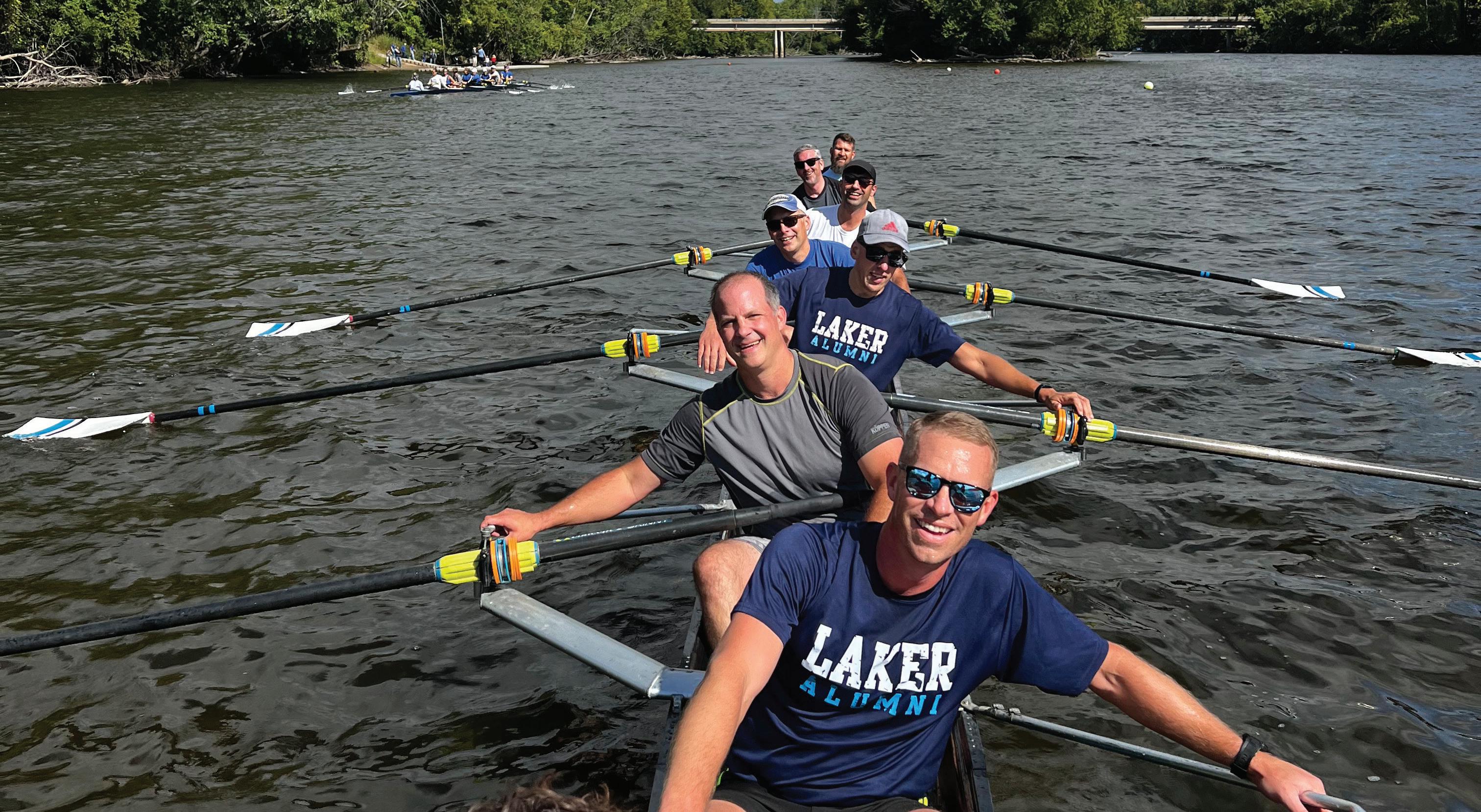
A 5 | OPINION

DISCOGRAPHY
Every Taylor Swift album, ranked
BY AYRON RUTAN LANTHORNEDITORIAL@GVSU.EDU
After an illustrious career spanning almost two decades, Taylor Swift has been the center of a zeitgeist effect seldom seen in pop culture. Her discography and public persona have seeped so far into the psyche of America’s youth that they are impossible to ignore. Having released her debut album at age 16, fans have seen her continually evolve and pursue new sounds on each studio release, known synonymously as her “eras.” Of course, being so popular and culturally significant, Swift’s music is often the subject of many opinionated music fans with equally as much criticism as there is praise. After all, even with millions of albums sold, countless Billboard #1 songs, and the recently gained status of billionaire, Swift is universally seen as a victim by her fan base.
While I myself do not frequent Swift’s music, I am at my core deeply passionate about music and am always looking to broaden my horizons. So, to hopefully open my mind a little, I listened through the singersongwriter’s discography from front to back in an attempt to differentiate her best from her worst. The ground rules for this list are simple. I am ranking her core studio releases as they were originally released, so any of the deluxe or “From the Vault” tracks from any of the re-recorded “Taylor’s Version” albums will not be considered. Swifties, please don’t come for me.
#11 - “Taylor Swift” (2006, Big Machine)
Swift’s 2006 self-titled debut is an album so cliche and generic it could be made by AI. It includes 11 total tracks, nine of which are essentially about the same thing. The whole thing is pretty bland and sounds like any other female country album from the 21st century. I’ll try not to be too hard on it though. Swift recorded it at 15 and frankly, it sounds like it.
FAV TRACK: “Cold As You” LEAST FAV TRACKS: The rest of the album
#10 - “Fearless” (2008, Big Machine)
Taylor’s 2008 sophomore effort shows some gained maturity from a songwriting standpoint, with slightly heavier emotional appeals and hooks. “Fearless” also sees Taylor planting the pop-hit seeds that would grow her career into what it is today. Although I can’t stand them, songs like “Love Story” and “You Belong with Me” prove that at just 18, Taylor knew how to write a massive radio hit. All in all, the album isn’t that big of an improvement to her debut, and still leaves much to be desired.
FAV TRACKS: “White Horse,” “Breathe” and “You’re Not Sorry”
LEAST FAV TRACKS: “The Way I Loved You,” “The Best Day” and “Forever and Always”
#9 - “Red” (2012, Big Machine)
Right when it seemed like Taylor would release her most consistently solid country album, she took a rather large left turn and decided to explore the pop realm. 2012’s “Red” is littered with electronic elements and pop sensibility, but is ultimately all over the place. Transitioning from “Treacherous” to “I Knew You Were Trouble” is such a shift that it’s almost abrasive. While Swift was able to snag a few big pop hits, her fourth record listens like she’s lost creativity. “Red” ultimately doesn’t know what it wants to be and serves as a pretty tiring listen.
FAV TRACKS: “State of Grace” and “The Last Time”
LEAST FAV TRACKS: “Red” and “Stay Stay Stay”
#8 - “Reputation” (2017, Big Machine)
“Jumping the shark” might be the best way to describe 2017’s “Reputation.” Three years after the massive success that was “1989,” Swift dives further into the waters of conventional pop, introducing elements of hip-hop and EDM throughout the track listing. Taylor also seems to adopt this new edgy “tough-girl” persona that ultimately just comes off sort of forced and fake. Cringeworthy moments such as “Look What You Made Me Do” come off more as an insecure attempt to prove toughness rather than a triumphant stand against her haters. While there are a few minor highlights on the record, “Reputation” delivers very little to write home about and only adds fuel to the fire for her biggest critics.
FAV TRACKS: “Getaway Car” and “Dress”
LEAST FAV TRACKS: “Look What You Made Me Do,” “…Ready For It?” and “This is Why We Can’t Have Nice Things”
#7 - “Speak Now” (2010, Big Machine)
Although slow-starting, 2010’s “Speak Now” sees Swift penning much more sophisticated ballads with even harderhitting emotions than her previous two efforts. However, the album’s main downfall is that its lows are just as impactful as its highs. Having to sit through Disney Channel-esque duds like “The Story of Us” and “Better than Revenge” after the powerful anthems that are “Dear John” and “Innocent” feels like having a sweet reward snatched away from you as soon as you receive it. All in all, “Speak Now” serves as a big step in the right direction for a then 20
year old Swift.
FAV TRACKS: “Dear John,” “Never Grow Up” and “Innocent”
LEAST FAV TRACKS: “Mean” and “The Story of Us”
#6 - “Midnights” (2022, Republic)
Two years removed from her twin portraits of pandemic blues, Swift returned to the studio with her synth-pop partner in crime, Jack Antonoff, to try and recapture the magic that made “1989” and “Lover” the mainstream giants that they were upon release. While 2022’s “Midnights” certainly did similar numbers, it’s ultimately missing that sweet something that the aforementioned projects had. There’s a few lyrical highlights and fun hooks here and there, but the album just kind of fades into the background of the rest of Swift’s discography. It’s likely her time with Antonoff has run its course.
FAV TRACKS: “Maroon,” “Labyrinth” and “Sweet Nothing”
LEAST FAV TRACKS: “You’re On Your Own, Kid,” “Bejeweled,” and “Vigilante Shit”
#5 - “The Tortured Poets Department” (2024, Republic)
If “Midnights” was the warning call for the waning creative relationship between Swift and Antonoff, “The Tortured Poets Department” is the nail in the coffin. The album is certainly a familiar and comfortable listen, but in the grander scheme of Swift’s discography it shows a Taylor that has become creatively stale. The same old production and lyrical themes are present and neither seem to offer anything fresh or interesting-- not to mention the pretentious title for an album with fairly mediocre lyrics. With that being said, “TTPD” is still a good Taylor Swift album. Signature breakup tunes such as “So Long, London” show Swift in her element capitalizing on a failed relationship like only she can.
FAV TRACKS: “So Long, London” and “Guilty as Sin”
LEAST FAV TRACKS: “Who’s Afraid of Little Old Me?” and “Florida!!!” #4 - “1989” (2014, Big Machine)
Taylor Swift owes a massive thank you to Jack Antonoff and Max Martin for essentially saving her career. 2014’s “1989” shows a Taylor that has completely reinvented herself, working out all of the awkward pop kinks heard on “Red.”
The album is chock full of catchy hook after catchy hook paired with a dreamy feel heavily inspired by the synth-pop movement of the 1980s. While “Bad Blood,” “Shake it Off” and “Blank Space” catapulted Swift to the top of the mainstream, it’s tracks
like “Out of the Woods” that show Taylor has really found her footing in pop, even being able to add some real substance to the genre.
FAV TRACKS: “Out of the Woods” and “Wildest Dreams”
LEAST FAV TRACKS: “Welcome to New York” and “Shake it Off” #3 - “Lover” (2019, Republic)
Fresh off the runaway train that was “Reputation,” 2019’s “Lover” sees Taylor returning to the synth pop form that she mastered just four years prior on “1989.” Jack Antonoff’s production is back in full form with dreamy synths, skipping drums and bright accents of strings and horns littered throughout. The album also sees more mature pop songwriting from Swift with the introspective “The Archer” and the triumphant “Soon You’ll Get Better.” Ultimately, “Lover” listens as if “1989” grew up, acknowledging the adversity it’s faced and the importance of sticking to its roots. Taylor certainly saved face with this one.
FAV TRACKS: “The Archer,” “Paper Rings” and “Soon You’ll Get Better”
LEAST FAV TRACKS: “London Boy” and “ME!” #2 - “Evermore” (2020, Republic) There’s very little to say about “Evermore,” and honestly it’s for good reason. The second surprise record to come out of her spontaneous collaboration with Aaron Dessner ultimately just listens like “Folklore” part two, but doesn’t hit quite as hard.
FAV TRACKS: “Tolerate It,” “Coney Island” and “Evermore”
LEAST FAV TRACK: “Gold Rush” #1 - “Folklore” (2020, Republic) With the addition of first-time collaborator Aaron Dessner, 2020’s “Folklore” retains much of its predecessor’s pop sensibility, but utilizes a much more stripped down sound. Swift trades heavy synths for light guitars, strings and muted percussion, ultimately giving the album a laid back and dreamy sound that listens as if you’re lost in the woods searching for your own soul. The album also includes her best lyricism to date, arguably ever, with tracks like “Exile” serving as one of her all time best songs. The album explores romanticism and escapism, most likely influenced by the isolation brought on by the COVID-19 pandemic. “Folklore” serves as an artistic statement from Swift that proves she can write deeper than once perceived. Damn good for an album that was recorded entirely remote.
FAV TRACKS: “Exile,” “Illicit Affairs” and “Epiphany”
LEAST FAV TRACK: “Mirrorball”
A 6 | OPINIONS

Linkin Park’s highly awaited return is a disappointing renaissance
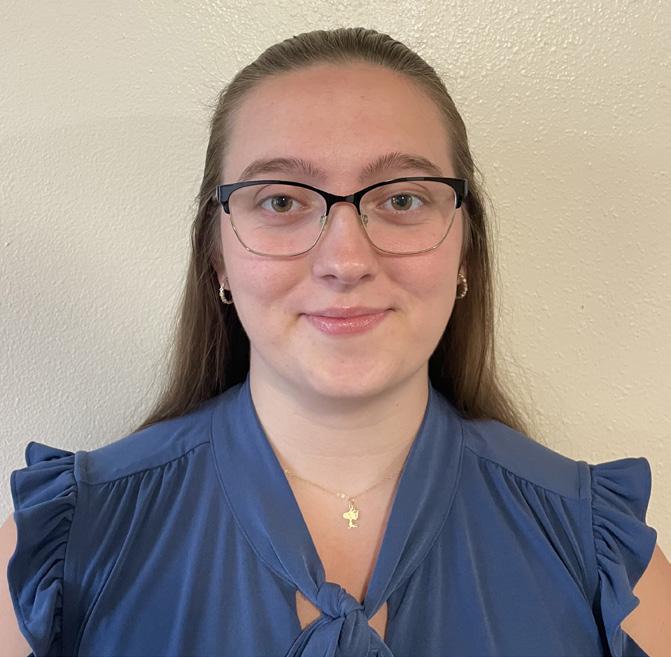
BY MACENZIE CONN
In 2017, popular rock band Linkin Park announced that their frontman Chester Bennington had passed away, and I was devastated. I had grown up on their music, and remember my mom jamming out to their studio album “Hybrid Theory” when I was a kid. They were in my “Top Artists” on Spotify Wrapped for years because there is not a song of theirs that I will turn off. I even had tickets to see them
live before they announced Chester’s death. I was shocked and disappointed that I’ll never be able to see one of my all time favorite bands perform. I, as well as millions of other fans, couldn’t help but wonder the next step for Linkin Park. The real question was, who had the voice to replace Chester?
Linkin Park had been quiet in the years following Chester’s passing, except for releasing some old songs that featured his voice. Despite this, everyone had been speculating about a comeback. Would the band use a hologram of him on tour? Would fans perform Chester’s parts? However, on Sept. 5 through a livestream, Linkin Park finally debuted their new lead singer, Emily Armstrong. They also announced their new album, “From Zero,” and an upcoming tour. The band also has a new drummer, Colin Brittain, and they will feature a fill-in guitarist for the tour, as Brad Delson announced he won’t be partaking in the band’s return. This was quite the surprise for Linkin Park fans, and it was a lot to take in at once.
I have heard conflicting opinions
from fans on the internet. Some people love Emily’s voice and are excited to get new music. Others have denounced Emily, and questioned her ability to live up to the fanbase’s standards. Many people think she is a replacement that Chester would have been proud of, and others think they should’ve gone in another direction. Truthfully, I can’t imagine a singer that all fans would give a stamp of approval, as Chester feels irreplaceable.
But, after watching Linkin Park’s first live performance, it feels phony. I understand wanting to bring on a female vocalist, and Emily is definitely talented, but I think they could’ve found a singer with much more powerful vocals. Truthfully, I’ve heard Linkin Park covers on YouTube that left me more impressed. Maybe she was just nervous, but the performance left me feeling like something was missing.
Fans have also trudged up Emily’s controversial past, and it makes many wonder if she should even be the face of Linkin Park. Previously, she defended Danny Masterson, a former star of “That ‘70s Show,” during his
rape accusation trials, over which he was convicted in 2023. According to an article by the BBC, she also has ties to the Church of Scientology, which many fans also frown upon. While the preceding elements don’t affect her vocals, I can understand why many fans are upset by this news, especially when Chester spoke against similar issues.
As a lifelong fan, I expected to feel more excited about the band’s return, because after all, their revival has been something I’ve waited years for. I’ve seen people say that the members of Linkin Park should’ve just started a whole new band, and after listening to their recent project, I agree. While it is undeniable the music has a traditional Linkin Park influence, it just isn’t the same band anymore. It seems like they’re just holding on to the band’s name for increased popularity and media attention. Despite my love for Linkin Park, I don’t think I’ll be buying another ticket to see them live, because frankly, I can’t imagine it would be any different than seeing a cover band.
Bold beverages: beer picks for those that hate beer
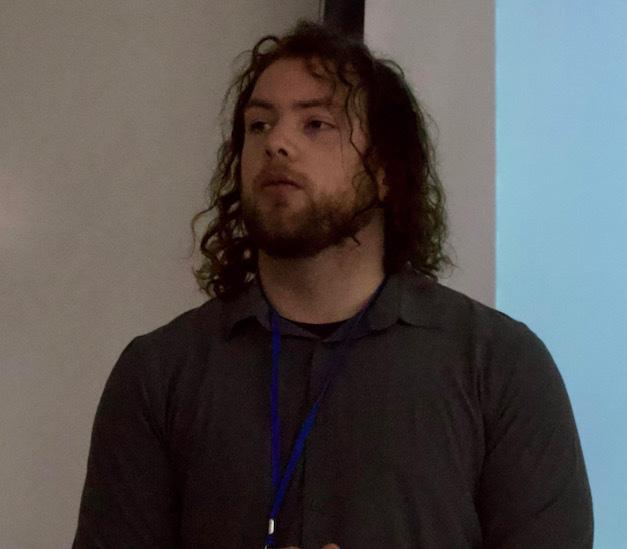
BY COLLIN ST. JOHN
I recently visited Founder’s, a popular brewery in downtown Grand Rapids. I’ve never really liked beer, but I decided I’d give it a shot because of how well liked the brewery is. With helpful advice from my friends, I was able to enjoy the beverage that had previously never been tolerable to me. The visit inspired me to create a list of my favorite beers for those over 21 that don’t normally enjoy the beverage. Since Founder’s is a local brewery that provides a ton of diverse and unique craft beers, a few of their drinks will, of course, be on the list.
Tropical Fruit – Founder’s I tried this beer at Founder’s, and its name tells you all you need to know–it’s extremely fruity. It was the only one on the menu that didn’t register on the International Bitterness Unit (IBU) Scale. IBUs are used to measure the bitterness
of a beer, and for many of us that dislike the taste of beer, it is the bitterness that bothers us. Indian Pale Ales (IPAs) are usually high on the IBU scale, hence, why for many, it’s an acquired taste.
Tropical Fruit, on the other hand, isn’t bitter at all. It tastes like tropical fruit juice with carbonation. This beer probably tasted the furthest from alcohol compared to others I’ve tried, so if you want to drink a beer that tastes nothing like one, this could be your go-to. Unfortunately, Founder’s only seems to offer this beer on tap at their taproom downtown or during rare promotions. Yet, there are other flavors such as Mortal Bloom Tropical Fate that Founder’s offers year-round, they are just a bit more bitter.
Rubaeus – Founder’s
Rubaeus is a raspberry ale. It has a unique wine-like aftertaste with notes of fruit, and it’s probably my favorite beer I’ve tried so far. Somehow, this drink fuses the textures and bitterness of hard cider, all under a blanket of raspberry flavoring. I’d recommend, if possible, giving this one a taste test before buying multiple. From my personal experience, people seem to either hate it or love it. You can find this beer at Founder’s Taproom (nitrogenated as well), and in most local stores.
Draught Stout – Guinness
This one is for the coffee lovers. Guinness Draught Stout is a nitrogenated
stout that’s smooth, creamy and tastes like strong coffee. It’s different from any other beer I’ve ever tried. One of the best things about this beer is the pour. There’s a specific way to pour these beers into your glass because they are nitrogenated. Then, after pouring, you are supposed to let it settle for a couple minutes before you take your first sip. It is slightly more expensive than your everyday domestic beer, such as Bud Light or Coors, but it’s worth it if you enjoy coffee. My favorite way to drink it is poured from a can into an ice cold glass.
Brunch – Farmhaus
Imagine this: it’s a crisp autumn afternoon with the windows cracked open. There’s football on in the living room, friends gathered around and there’s an ice cold Brunch cracked in your hand. Brunch is a hard cider, which I feel can be an alternative to traditional beer, and Farmhaus ciders are top-notch. Brunch tastes like maple syrup and cinnamon, layering over the hard cider foundation that begins every delicious Farmhaus beverage. If you aren’t in the mood for a sweet and savory Brunch, or if it isn’t in season, you can always pick from the other classic flavors Farmhaus offers, such as Daily Dry and Midwest Nice. Other seasonal ciders include Sweater Weather, a must have winter beverage, and After Glow, a smoky delight, which are both terrific. In addition, they’re made right down the road from Grand Valley State University. They have a high-quality taproom with
a woodsy outdoor seating area to enjoy your drink and the people around you. You can also find their drinks at most superstores and some beer shops.
OPINION POLICY
The goal of the Grand Valley Lanthorn’s opinion page is to act as a forum for public discussion, comment and criticism in the Grand Valley State University community. Student and columnist opinions published here do not necessarily reflect those of the paper as an entity.
The Lanthorn strives to be a safe vehicle for community discussion. With this in mind, the Lanthorn will not publish or entertain any forms of hate speech, but neither will it discriminate against any other views, opinions or beliefs.
The content, information and views expressed are not approved by-nor do they necessarily represent those of-the university or its Board of Trustees, officers, faculty or staff.
Letter to the editor should include the author’s full name, relevant title and a headshot, along with a valid email address and phone number for confirming the identity of the author. Letters should be approximately 500650 words in length, and they are not edited by the Lanthorn staff except to fix technical errors or to clarify. Reader submissions on the opinion page appear as space permits.
To make a submission, email editorial@ lanthorn.com or drop your submission off in person at:
0051 KIRKHOF CENTER
GRAND VALLEY STATE UNIVERSITY ALLENDALE, MI 49401
616-826-8276

EDITORIAL
Deformed discourse: changing structure of presidential debates stir mixed feelings
BY LANTHORN EDITORIAL STAFF LANTHORNEDITORIAL@GVSU.EDU
This election season, there were notable changes to the structure of presidential debates. Between no live audiences, microphone muting, no opening statement and no prewritten notes, this year brought surprising adjustments to the debates’ format. The Sept. 10 debate between Vice President Kamala Harris and former President Donald Trump also introduced a new aspect: live fact-checking during the debaters’ arguments. We don’t know how to feel about these new changes.
Alterations to this election season’s debate format were debuted during the June 27 presidential debate between former Democratic nominee President Joe Biden and Republican Nominee Trump. The absence of a live audience was surprising to us, as this is the first time that no live audience was present since the presidential debate between John F. Kennedy and Richard M. Nixon in 1960.
This practice carried on to the Harris-Trump debate that took place with no audience. The primary source of interruption to the candidates came from the moderators in the form of
fact-checking or attempting to enforce the time limit.
According to an article by Politico, Trump’s refusal stands on claims that the event was “rigged,” specifically attributing the injustice to the live fact-checking that occurred during the debate. The Washington Post reports that Trump was fact-checked five times during the debate, whereas Harris wasn’t fact-checked on any statements in the moment. However, after the debate, ABC published a full report including the legitimacy of her claims. It stated that during the debate, Harris made five valid claims, five claims in need of context and three false reports, while Trump made zero valid claims, four in need of context and nine false reports.
We, as audience members, have observed nominees fact-checking each other while the moderators have stayed silent in the past. A prime example of this is the debate between Biden and Trump in 2020, in which the presidential candidates spent more time interrupting each other than actually debating, which we found exhausting to watch. Although muting candidates’ microphones while the other candidate is speaking can avoid the “bickering” that was evident during the Trump-Biden debate, we
feel muting mics too frequently takes away from a candidate’s responsibility to hold both themselves and their opponent accountable.
Additionally, microphone muting leaves us with another question: who’s in charge of muting the mics? There were obvious inconsistencies throughout the debate regarding when mics were on or off. This allowed candidates’ retorts to be heard at the discretion of those controlling the mics. USA Today noted that even without hot mics, nominees’ reactions during their opponent’s speeches were still worth hearing to some viewers, and we agree. We feel that it should not be the job of someone behind the scenes to decide what audiences should be able to hear and what is muted.
With moderators pausing for fact-checks and active microphone control, we can’t help but wonder if the new structure of presidential debates actually gives viewers and voters the best idea of what candidates represent. Interaction from moderators allows the framing of the debate to be manipulated, regardless of if the candidates themselves are being disruptive.
Instead, we think the candidates should have a hot mic, active in the
entirety of the debate. This allows each opponent the opportunity to interject and instantly react to comments made by the other candidate. We think providing the audience with a candidate’s unfiltered comments will give insight into how the candidates hold themselves, as well as the professionalism they maintain.
With this in mind, we also think it is important to limit the amount of fact-checking that is being done by the hosts of the debate. Instead, we urge the candidates to be thorough in their research and preparation prior to the debate and debunk claims made by their opponent on their own. We think this would provide Americans more context to decide who is “the winner” of the debate.
Many Americans, us included, are still processing how they feel about this year’s second presidential debate. According to PBS, Harris claims that she and Trump “owe it to voters” to have another debate before the election, but it is unclear if that will actually happen, considering Trump publicly declined the invite of a second debate on social media. However, vice presidential candidates Tim Walz and JD Vance have agreed to a debate moderated by CBS News, scheduled for Oct. 1.
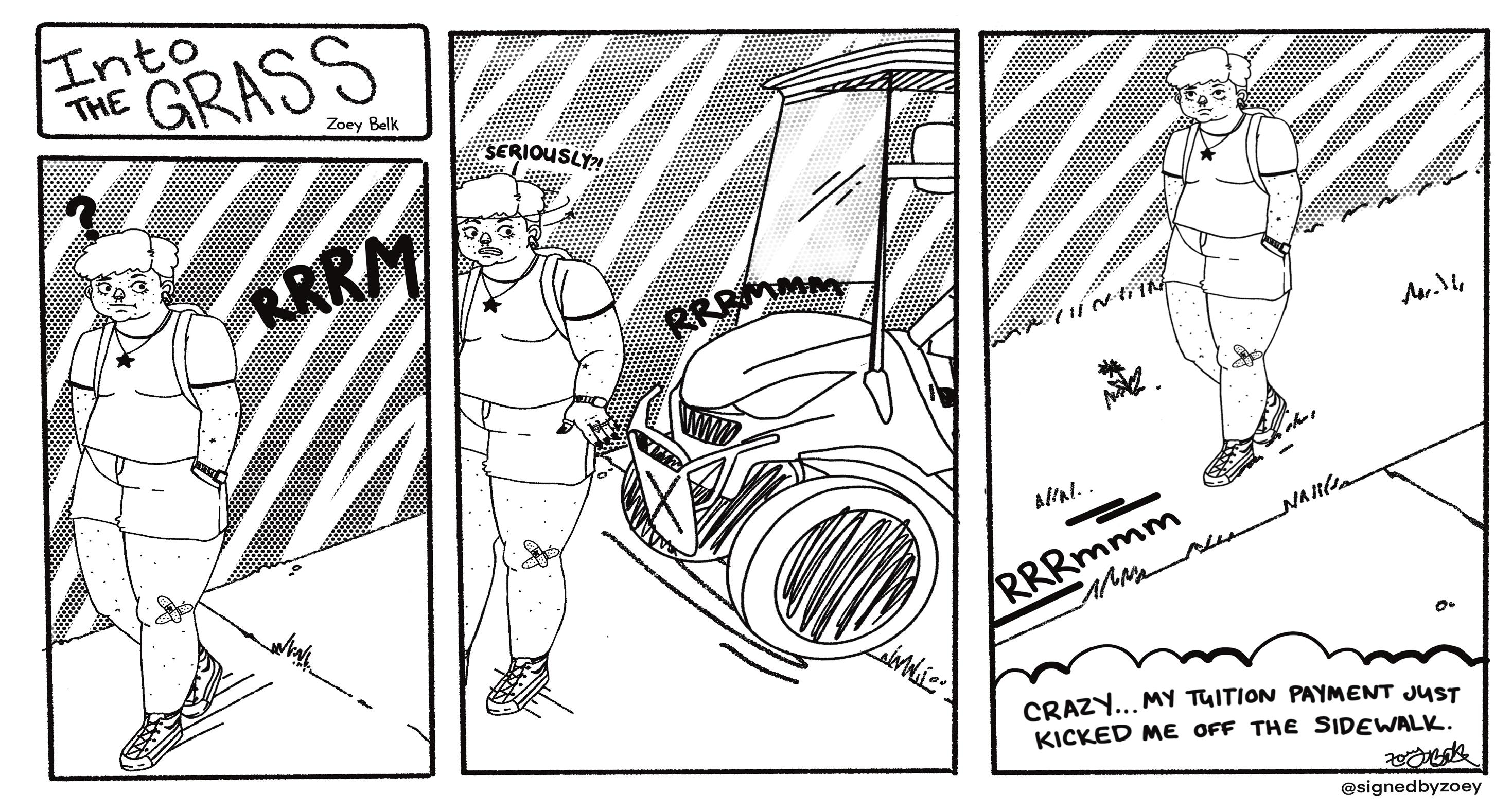

GV football weathers late comeback from CSU Pueblo
Grand Valley State University’s football team took a trip to Colorado to compete against the Colorado State University Pueblo Thunderwolves on Saturday, Sept. 14. The game, which was their first away matchup of the season, ultimately ended in a 24-21 win for GVSU.
Coming off a largely successful home opener win against Central State University 58-0, the Lakers returned their vintage blue uniforms for their white jerseys, hoping to build off their start-of-season momentum against the Thunderwolves.
Both teams were undefeated coming into the matchup, with the Lakers having won against Central and the Thunderwolves having won two games against the South Dakota Mines 35-6 and the University of Texas Permian Basin 40-23. The winning streak of both teams was at stake during the game.
The last time the Lakers competed against the Thunderwolves was September 2023 during a home game. The game was competitive, lasting over three and a half hours, and going into double overtime. The matchup concluded in a 57-49 win for the Lakers.
Since GVSU had played CSU Pueblo in their last season, the Lakers were aware of the Thunderwolves’ aggressive, passing playing style, and were able to prepare for the game accordingly.
The Lakers dominated the entire first half of Saturday’s game. The team locked down CSU Pueblo and was able to capitalize on any mistakes their opponent made.
Immediately after CSU Pueblo’s first possession, GVSU went on a 78yard drive, which ended in the first touchdown of the game. 47 of these yards were headed by sophomore running back Khalil Eichelberger.
The Lakers followed this up with another impressive drive that ended in a 24-yard pass to sophomore wide receiver Kellen Reed.
After closing out both touchdowns with successful point-after attempts by freshman redshirt kicker Matthew Bacik, the Lakers ended the first quarter with a 14-0 lead.
In the beginning of the second quarter, Bacik continued his success with a 41-yard field goal, giving the Lakers a total of 17 points on the scoreboard. The first half ended in a 17-0 lead for GVSU.
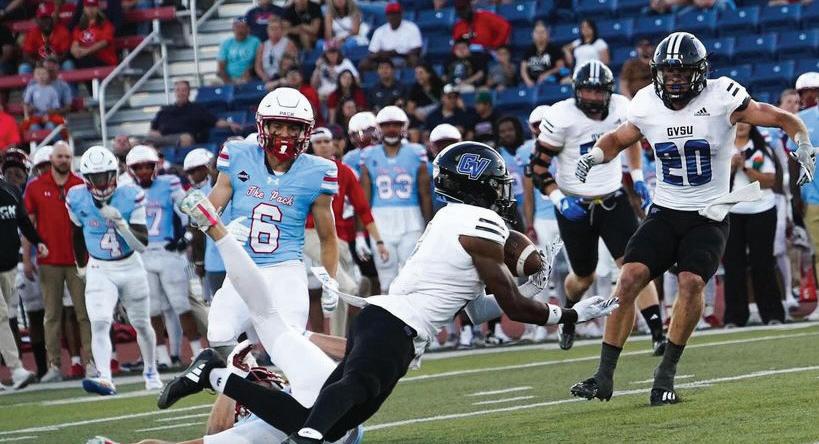
Khalil Eichelberger shared that offensive’s strategy for the game’s first half was to dominate in specific aspects of the matchup.
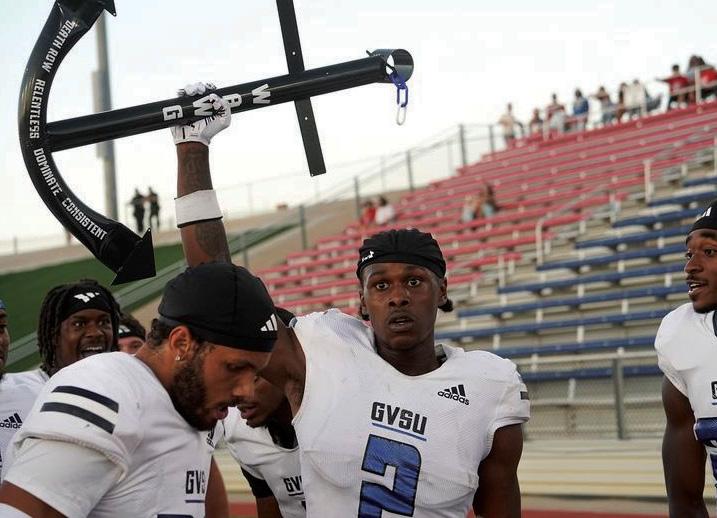
“(The strategy was to) be the more physical team,” Eichelberger said. “Dominate up front, in the back field and in the pass game, since they played a lot of man-to-man coverage.”
The GVSU offense wasn’t the only success story on the field. The defensive line was also able to shut down any rushing yards from CSU Pueblo. At the end of the game, the Thunderwolves were only able to get 68 rushing yards, compared to the Lakers’ whopping 239 rushing yards.
This accomplishment on the defensive line was what allowed GVSU’s offense to earn a 17-point lead in the first half.
Eichelberger noted that the defensive line’s contributions allow the rest of the team to have confidence in their ability to win.
“The defensive line did amazing per usual,” Eichelberger said. “It’s one of those things where we can sit back and relax because we know they (the defensive line) will win.”
Despite the Lakers’ tremendous success in the first half, CSU Pueblo was able to close in on the 17-point lead in the second half. In the third quarter, the Thunderwolves completed one successful touchdown, closing the gap 17-7. However, the Lakers were able to follow this up with their own touchdown, bringing the score to 24-7 by the end of the third quarter.
In the fourth quarter, the Thunderwolves were able to take control of the field, scoring another two touchdowns and ending the fourth quarter with 14 points added, resulting
“It’s one of those things where
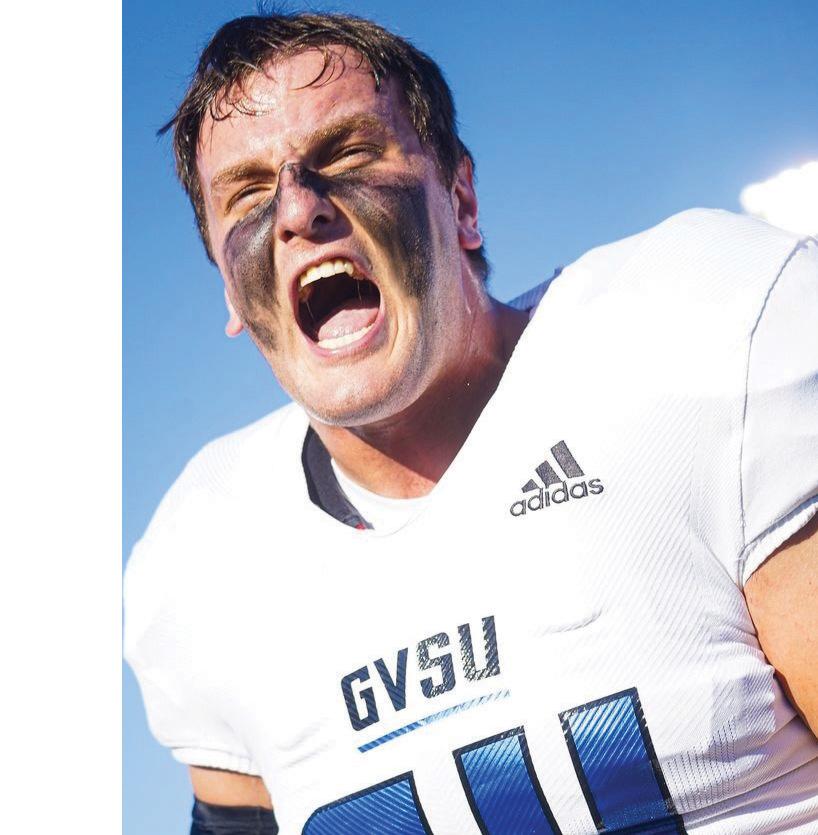
DRIVING: GV’s offense had a total of 162 passing yards and 239 rushing yards against the Thunderwolves.

ArtPrize’s immersive experiences appeal to GV students
BY LEE MARENTETTE
ArtPrize 2024 is in full swing, with 164 venues displaying art across five districts of Grand Rapids. The yearly event, which opened on Friday, Sept. 13 will run through Sept. 28, and this year, there will be more immersive events, including live performances and demonstrations. The voting process has also changed, allowing attendees to vote at any point during the event instead of having to wait for a small window of time, making the experience more personable and interactive.
This will be ArtPrize’s second year being structured differently than it had been in the past, bringing with it better prizes, more entries and greater student involvement to promote educational values. This change is the result of Rick Devos’ 2022 leadership departure, and the establishment of a public-private partnership between the City of Grand Rapids, Kendall College of Art and Design and Downtown Grand Rapids Inc.
Grand Valley State University has a long history of partnering with
ArtPrize, dating back to the very first competition in 2009. GVSU’s art collection even features many pieces that started as ArtPrize entries.
This year, GVSU continues its ArtPrize involvement by displaying a sculpture by Daniel Roberts, named “Gathering Currents.” The art piece was inspired by the East River in New York City, representing change, movement and growth, and was strategically placed outside of the Eberhard Center on GVSU’s Pew Campus, next to the Grand River.
Jessica Sundstrom, the learning and outreach manager for the GVSU Art Gallery, said that the decision to display Roberts’ piece was deliberate.
“Rivers are meaningful to humans around the world, as they connect communities, provide water and support life and ecosystems,” Sundstrom said. “This work allows our students and community visitors to reflect on their own relationships with water, and pause to reflect on their personal journeys in life.”
Sundstrom added that it is important for the GVSU Art Gallery to participate in significant cultural
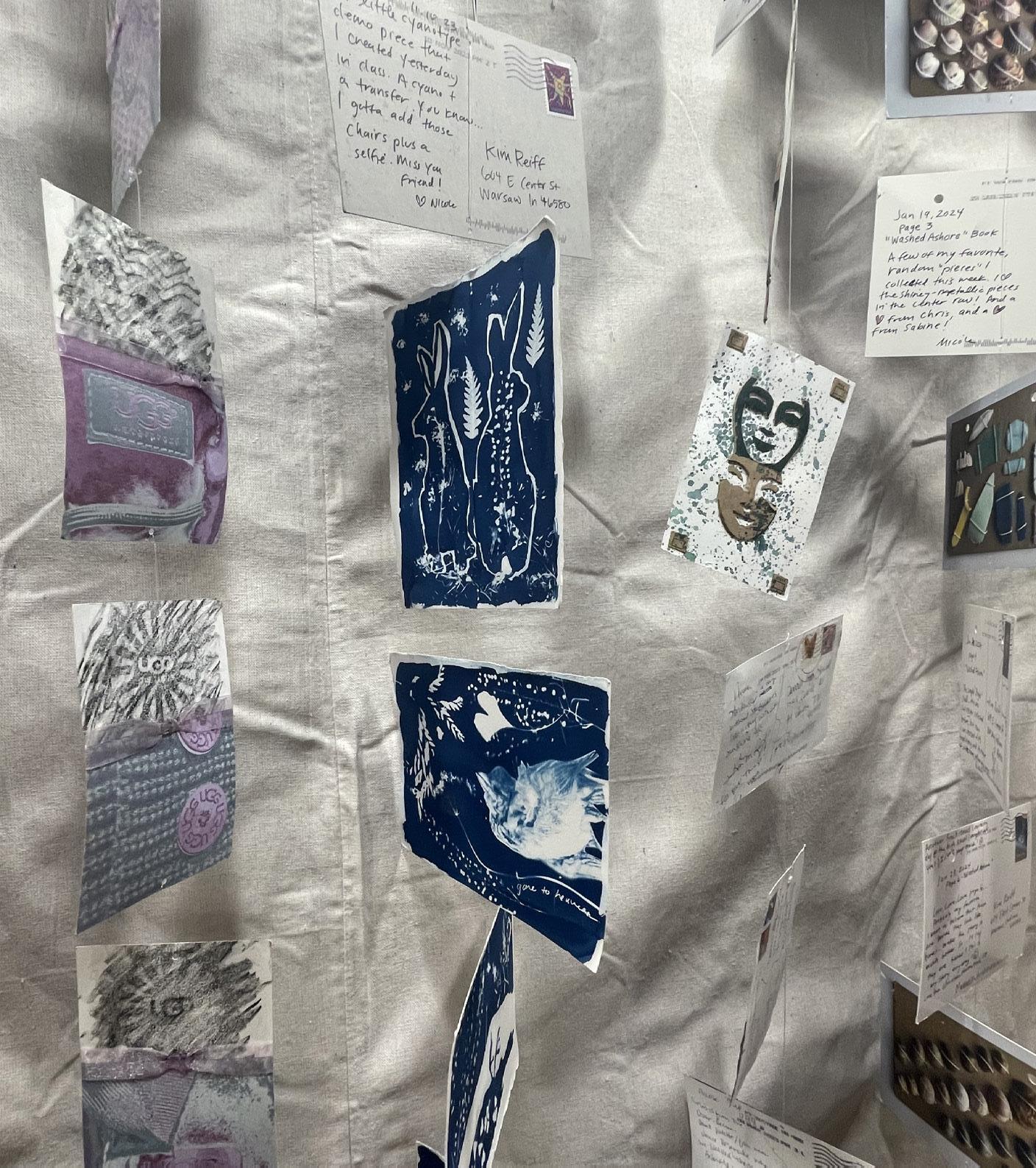
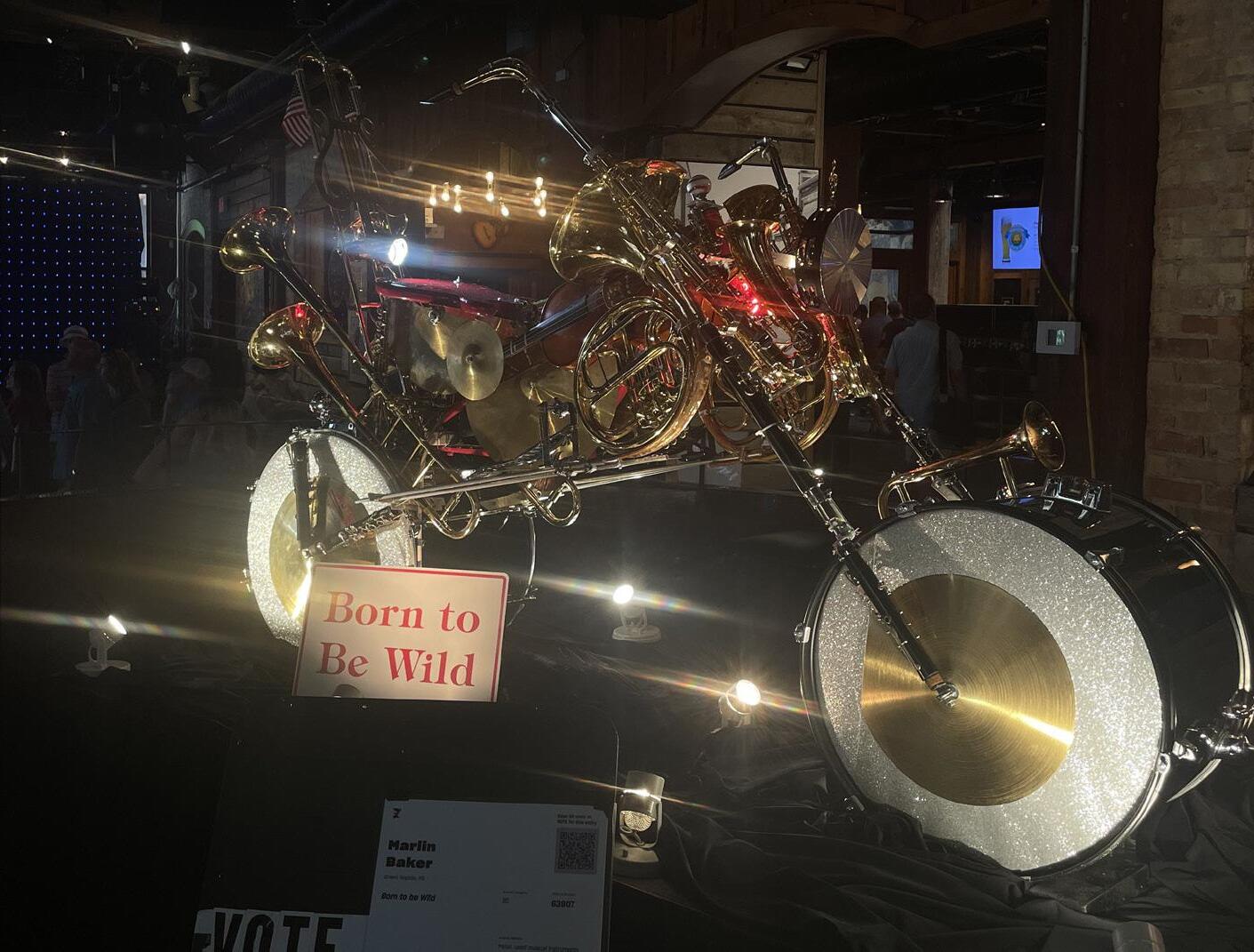
events like ArtPrize, as they help educate students and bring together the community.
“Our ArtPrize installation is outdoors, so it is accessible to everyone,” Sundstrom said. “We believe in direct access to artwork, and ArtPrize provides one of the most open and accessible opportunities to engage with artwork across the city.”
Many GVSU students and alumni have also had their creations displayed in the competition. This year, Jamari Taylor, a 2019 GVSU graduate who has participated in the last four ArtPrize events, is showing “The 4 L’s,” a painting that depicts a woman wearing a headscarf made of flowers.
“This is a journey of learning something of the past and comparing (it) to the present,” Taylor said. “The Tignon Law that was passed in the 1700s forced women of color to wear tignon scarfs, with the motive of belittling the Black identity and hiding
their kinky hair. In today’s society, myself and others who are a part of the Black culture wear scarves, head wraps, as a way to protect our hair, style our hair and, as some may see it, it’s like a piece of jewel, our crown.”
Taylor added that while she was a student at GVSU, she was greatly inspired by ArtPrize and recalled wanting to participate. Now that she has achieved that goal, she hopes she can pass inspiration to current students.
As a result of Kendall College’s involvement in ArtPrize, students with similar aspirations can get involved by attending the Portfolio Review, which is being held for its second year. The two-day event connects art students with local, professional artists who review and provide feedback on their art portfolios.
“I’m truly thankful and blessed,” Taylor said. “I hope that (by) me being an alumni of GVSU, (it) inspires others to follow through with their dreams.”
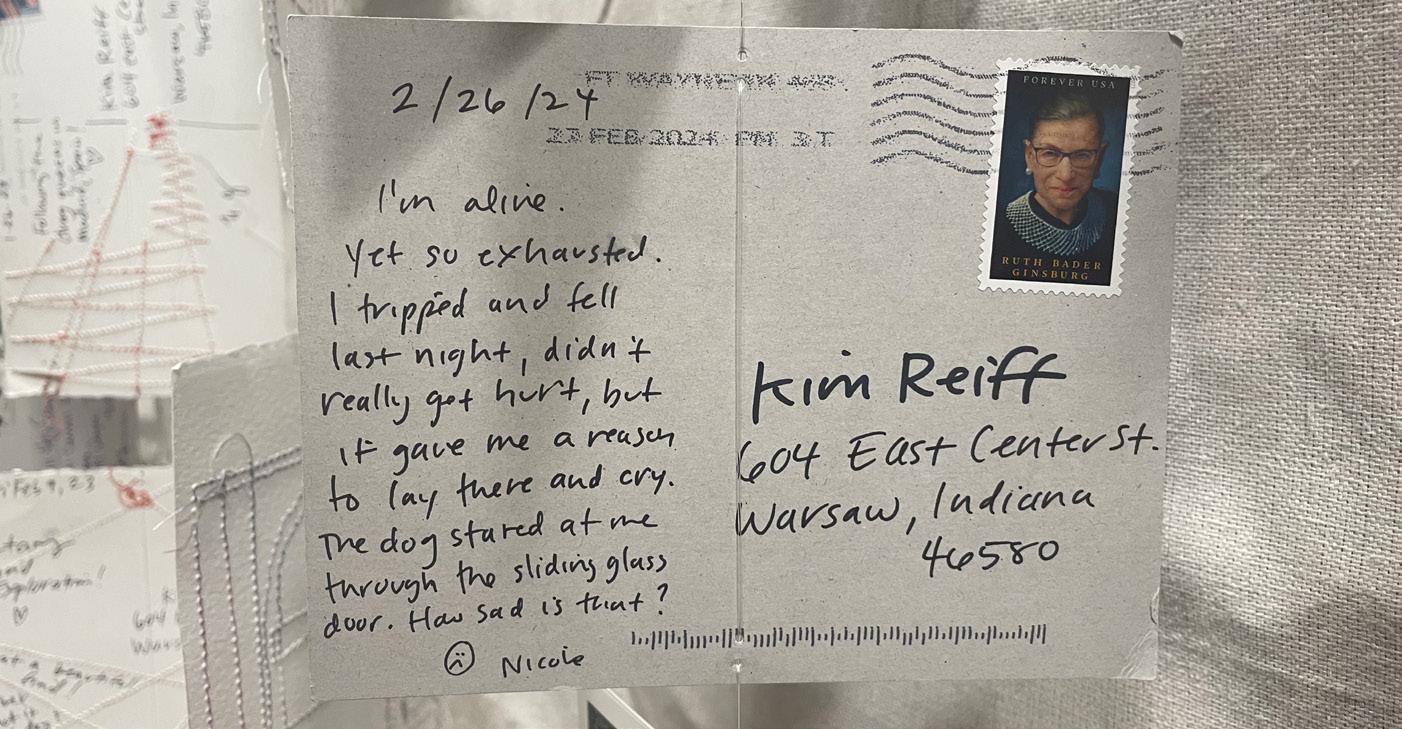
INSPIRATION:
GVL I SARA BAGLEY

Guest artist brings movement, music to GV dance students
BY LACIE HOFFMAN LANTHORNEDITORIAL@GVSU.EDU
This past week, dance students at Grand Valley State University were given the unique opportunity to work with, and learn from guest musician, dancer and choreographer Alison Clancy. Clancy is a New Yorkbased performer, currently acting in 16 productions at the Metropolitan Opera, and was the 2022 recipient of the New York State Choreographers’ Initiative Award.
The Department of Music, Theatre and Dance (MTD) invited Clancy to share her artistic experience with students and teach them her unique style of ballet, contemporary and modern dance. In addition to teaching dance students, Clancy created choreography and hosted auditions for a musical and vocal number that will be used at the dance program’s upcoming fall showcase.
Chloe Schram, a GVSU dance major, said that working with Clancy provided unique insight into the multiperformative world of music and dance.
“(Clancy) is skilled in several different areas,” Schram said. “The piece that we’re doing, it’s her music. She’s singing in it, so she’s a musician and dancer. I don’t believe that I’ve ever done that, learning a piece from
a choreographer and then dancing to their music (singing).”
On her website, Clancy describes her solo performances as having been defined as haunting, both in their movement and vocally. Her genre is broad and has helped to expand her profession across live stages, films and teaching opportunities.
Schram said that Clancy’s piece for GVSU dancers reflects her different and unique style, introducing a movement that many of the dancers hadn’t encountered before.
“(Clancy’s piece) incorporates a lot of contemporary, but it’s kind of somber (and) a little eerie,” Schram said.
Haley Rosendale, another GVSU dance major, said that Clancy is one of the sweetest and calmest choreographers who has taught at GVSU.
“Her piece is very pretty and slow,”
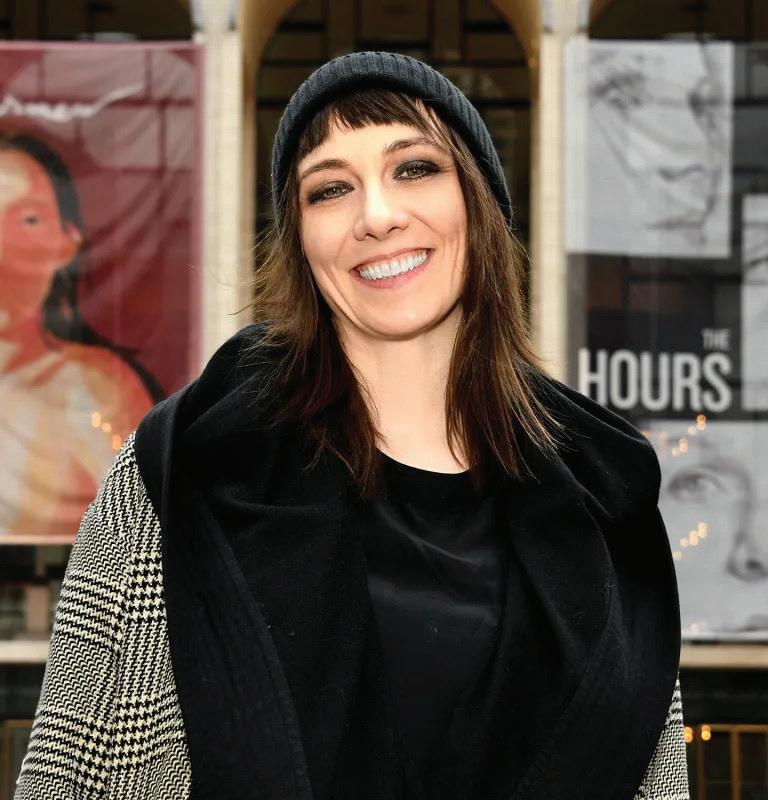
Rosendale said. “The music is really beautiful.”
Rosendale added that there are many different styles within ballet and described Clancy’s piece as neoclassical, which showcases more abstract movement than classical ballet traditionally does.
“(Clancy) kind of combines contemporary and ballet,” Rosendale said. “You’re very flowy and moving your whole body through everything.”
Both Rosendale and Schram said that Clancy’s mix of ballet and contemporary style took some getting used to, as it was a new creative process to learn and explore.
“It’s challenging in a positive way to really take on the movement and the vibe of
the piece,” Schram said. “(We) really have to be in our movement and not speed anything up because it is a slower piece.”
MTD invites guest teachers like Clancy to provide students with a broader range of education and dance experiences. Rosendale said it is very helpful for dance students to have the opportunity to work with guest choreographers and dancers, as it helps guide them into the professional world of dance and performance after graduation.
“Any guest artists we have (at GVSU) share their past experiences and their professional time,” Rosendale said. “Getting to hear their stories, tips and different styles (is) honestly very impactful on all of us because we strive to go into the professional world once we graduate.”
A 12 | LAKER LIFE
WATER SPORTS

Water Ski Club makes waves by winning season’s first competition
BY CHRISTINA BILKO LANTHORNEDITORAL@GVSU.EDU
On Monday, Sept. 9, the Grand Valley State University Water Ski and Wakeboard Club took home the trophy at their first competition of the season. The club competed in the Allentucky Waterbowl, a competition hosted by GVSU in Conklin, Michigan, where the team secured a win from their high scores across three categories.
Water skiing requires an athlete to wear skis that position them above the surface of a body of water. Their direction and speed is determined by a motorboat, which pulls them along by an attached rope. Competition categories usually include jump, slalom and trick. Throughout the course of a competition, team members are awarded points by a group of judges, based on their proficiency within each event.
The jump event tests how far a
competitor is able to jump their motorboat without tipping over. In the slalom event, competitors wearing water skis dodge buoys stationed around a course. Factors such as the speed of the boat and the length of rope attached can influence the amount of points awarded. The most technical of the three, the trick event, is based on the amount of tricks a competitor can successfully complete within twenty seconds.
In preparation for these events, the Water Ski Club adhered to a persistent training schedule. The team practices at the Bass River Recreation Area Tuesday through Friday. Weekly meetings are also held to discuss goals, expectations and tournament regulations. Their home site, the West Shore Water Ski Club, is also utilized on a weekly basis to train for the jump and slalom events. A practice course enables team members to effectively prepare
“We push the idea that being a part of a ski team is being part of a ski family, and that every team member’s time is valued.”
for competitions held at different locations across the Midwest. After the upcoming tournaments conclude in mid-October, the club does not meet again until the spring. When the weather becomes warm enough, they begin their training schedule once again for the fall season.
Although the Waterski Club currently has a roster of 42 members, the structure of a competition allows for a maximum of 30 athletes, ten per event. To accommodate all club members who wish to participate,
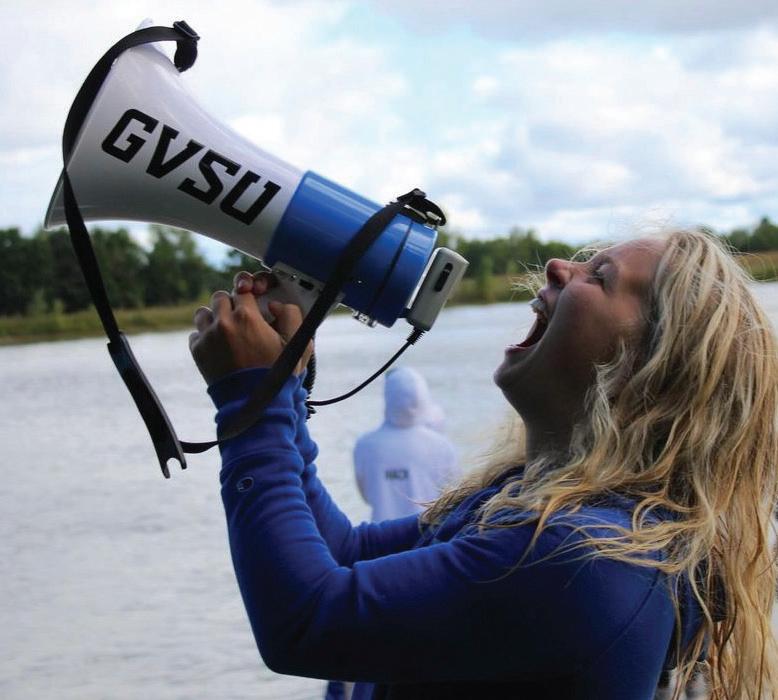
they are split into two categories called the A Team and the B Team. Members of the A Team are those who compete seriously and are determined to score as many points as possible. Due to the skill set required to perform various techniques effectively, not all members can be in this category. This necessitates the existence of B Team members, those who wish to participate in the events, but are not scored based on their performances. This alleviates pressure from club members who want to engage with the sport and hone their skills.
“I personally compete in A Jump and A Slalom, but I love doing B Trick just for fun,” said the club’s Membership Officer, Delaney Novach. This facilitative environment encourages a strong sense of community among the team.
“We push the idea that being a part of a ski team is being part of a ski family, and that every team member’s time is valued,” said Novach. “We also make a point to implement individual and team goals in order to further support each other.”
During the Allentucky Waterbowl, five other teams were present from schools including the University of Michigan, Michigan State University, Ferris State University, Western Michigan University and Purdue University. GVSU will also compete in three other competitions during the team’s season. These tournaments are known as Ripfest, Midwest Conferences and Midwest Regionals. Should the club secure a spot among the top universities in the Midwest, they will compete at the Collegiate Nationals in Texas.
“Personally, I’m super excited to go to regionals and hang out with all the other colleges,” said club member Joseph Blewett. “It’s always fun to hang out with the other colleges’ teams, and see how everyone improved during the summer. Overall, I’d say the team members this year are looking forward to competing for a spot at nationals to represent Grand Valley in Texas.”
VICTORY: The GVSU Water Ski and Wakeboard team celebrates a great start to the season. COURTESY | GVSU WATER SKI CLUB

GV Outdoor Adventures program encourages exploration
BY ABBIE SUAREZ LANTHORNEDITORIAL@GVSU.EDU
Grand Valley State University’s Outdoor Adventures (OA) program provides students with the opportunity to enjoy a range of outdoor activities, offering space for exploration, leadership development and community building. The program believes in the power of experiential learning, where students face realworld challenges in a controlled environment. From purifying water to being safe on hiking trails, students gain practical skills that can be applied both in the wilderness and in everyday life.
Part of the University’s Recreation and Wellness department, OA gives students the chance to participate in outdoor and adventure-based experiences without any formal membership needed, and unlike traditional student organizations, OA is staffed by paid students. Students are welcome to participate as much or as little as they wish, creating a flexible and inclusive environment.
The program operates several key resources, including the University’s Climbing Center, a bike maintenance area and a gear rental library. These services allow students to engage in outdoor activities.
Located in the Fieldhouse, the Climbing Center is a central hub for students interested in rock climbing. Though the OA program itself does
not focus heavily on social climbing activities, due to the presence of GVSU’s climbing club, Vertical Earth, there is a strong partnership between the two groups for trips and skill development.
The outdoor gear rental service provides essential equipment for backpacking and camping trips, enabling students to explore the outdoors independently or with friends. The bike maintenance area helps students keep their bikes in good working condition, offering hands-on support for repairs and upkeep.
“I strive to engage students through outdoor and adventure-based opportunities, and any GVSU student can participate as they desire,” said Joe Bitley, the assistant director of Recreation and Wellness, who oversees OA.
Exploration is a central value in OA’s mission. The program encourages students to step outside of their comfort zones, promoting self-awareness and curiosity through adventure-based experiences. This focus on exploration is reflected in the variety of trips and activities that OA offers, which range from day hikes to multi-day camping excursions.
Leadership is another core value for the OA program. The goal is to help students develop leadership skills through physical challenges and peerto-peer interactions. OA fosters personal growth in areas such as integrity, preparedness and perseverance. The program encourages students to share the skills they’ve learned on their own personal expeditions.
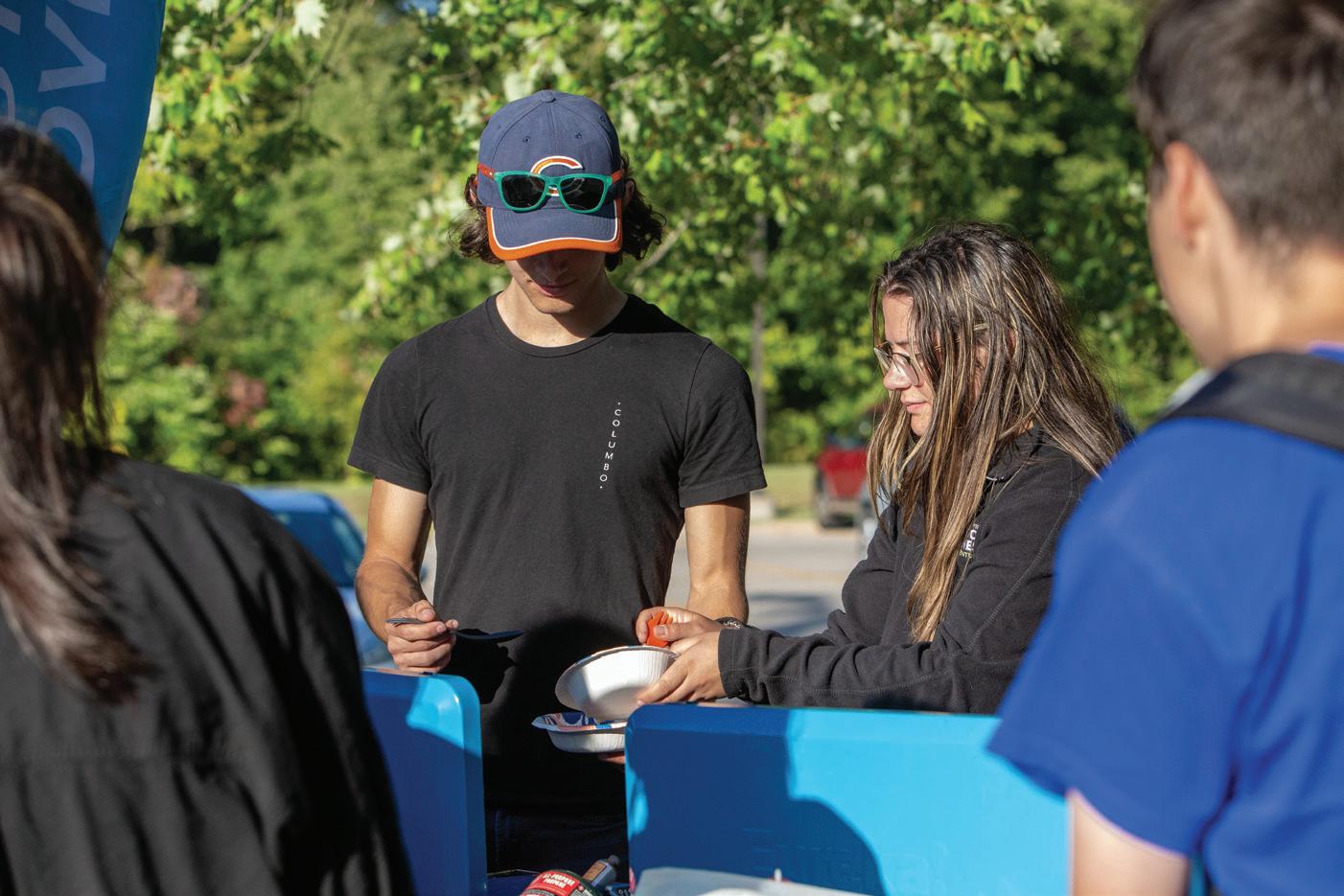
Community also plays a vital role in OA’s approach. The program strives to create an environment where students feel safe, included and encouraged. Whether it’s cheering on fellow climbers at the Climbing Center or helping a peer with bike repairs, OA staff and participants work together to build a supportive atmosphere.
“Since GVSU doesn’t have an outdoor club, the Outdoor Adventures program does try to fill that void with regular opportunities for social engagement with other students who enjoy things like hiking, camping, biking and paddling,” said Bitley.
Safety is a top priority in all of OA’s programs. Recognizing the
inherent risks of outdoor activities, OA emphasizes proper preparation, education and rigorous leadership training. Outdoor Adventure Leaders (OALs), the student staff that run the program’s activities, undergo training to ensure they can manage potential risks, and keep participants safe. An upcoming event will take students to Muskegon State Park for a day at the beach and on hiking trails. Recently, OA hosted a social gathering where participants learned to tie essential knots and hitches used in camping and backpacking. Once a week, the program hosts social events like these that are focused on teaching practical skills for outdoor activities.
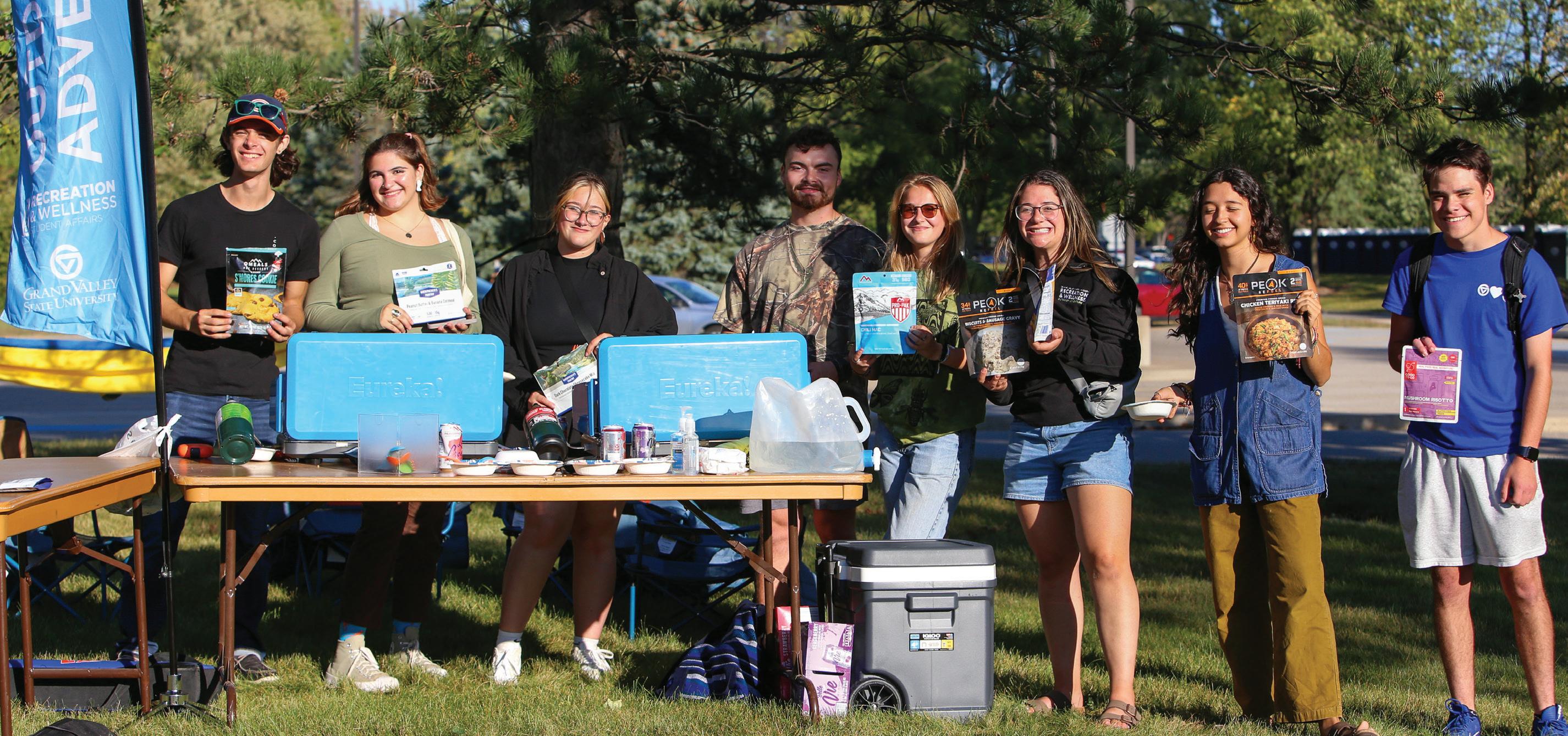
EXPERTISE: Students can learn skills in many survival areas. GVL | MACAYLA CRAMER

Cosplay Makers’ Circle encourages creative collaboration between students
BY ABBIE SUAREZ LANTHORNEDITORIAL@GVSU.EDU
Grand Valley State University’s Mary Idema Pew Library hosted its first weekly Cosplay Makers’ Circle on Sept. 3. The Makers’ Circle is a crafting activity organized by the Student Interest Group for Illustration (SIGIL), and is designed to unite students interested in costume creation and design.
Cosplay Maker’s Circle is a lead-up to Laker Con, GVSU’s annual celebration of comic literacy and the scholarly merits of sequential storytelling. This year’s convention, held Sept. 27-29 in the Mary Idema Pew Library, will feature a range of activities, including a cosplay contest with prizes.
“We thought it would be a fun event for students to work on costume projects together up until the cosplay contest at Laker Con,” said Kri Hackos, SIGIL financial officer and executive committee member for Laker Con.
Cosplay Makers’ Circle offers a creative space for students to work on their costume projects, exchange ideas and gain inspiration. On Sept. 3,
“We thought it would be a fun event for students to work on costume projects together up until the cosplay contest at Laker Con.”
attendees worked on leatherworking, chainmail, bullet journaling, beading and illustration. Crafts were created with some hands-on guidance from University Libraries Programs and Outreach Manager Stacey Burns.
Attendees are encouraged to bring their own projects or take advantage of free supplies provided by the GVSU Art Gallery, Atomic Object Technology Showcase and the Digital Creator Lab. The gallery is offering free “deely bopper” headbands and
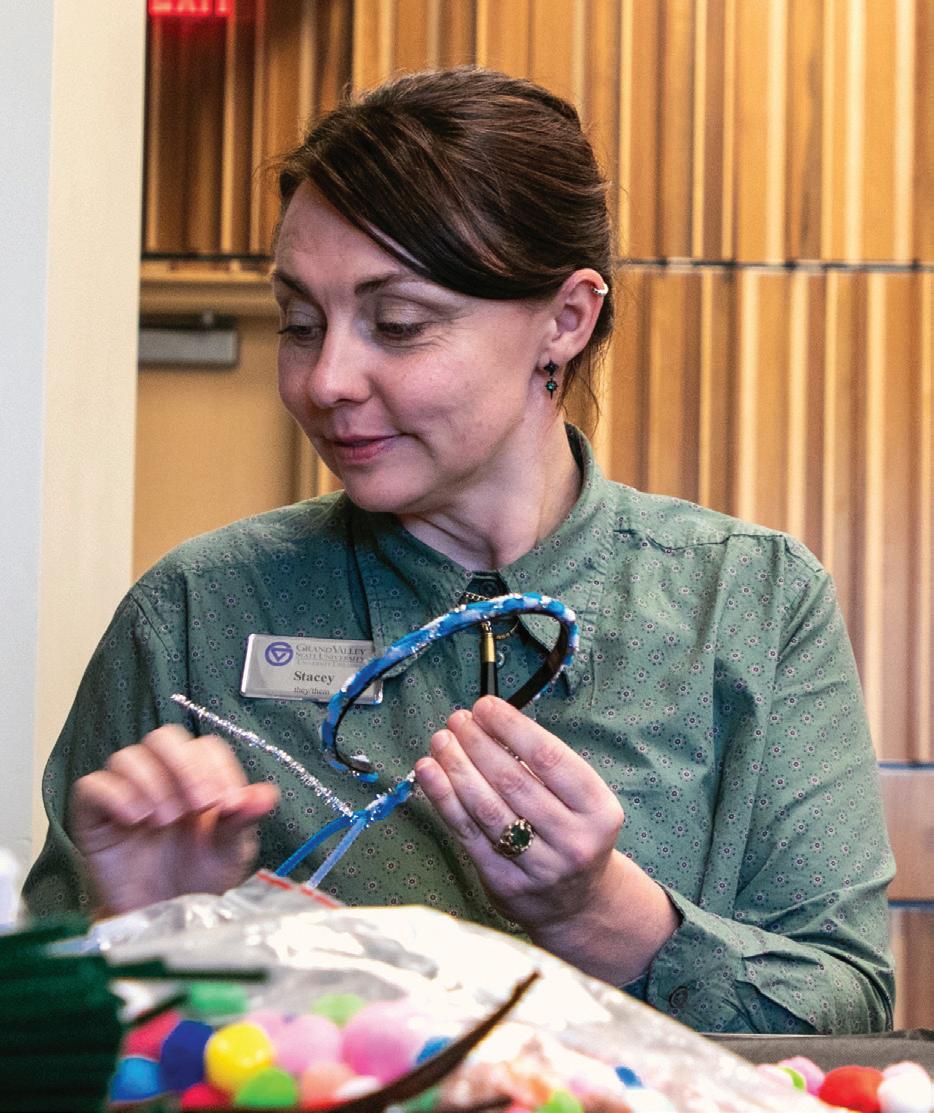
resources for creating costume sketches inspired by the gallery’s collection. The University’s library is also offering supplies for fiber arts, such as crochet and knitting, along with access to sewing and embroidery machines. In terms of digital media, the Atomic Object Technology Showcase can equip artists with any technology showcasing needs, and students may also experiment with tools and technologies from the
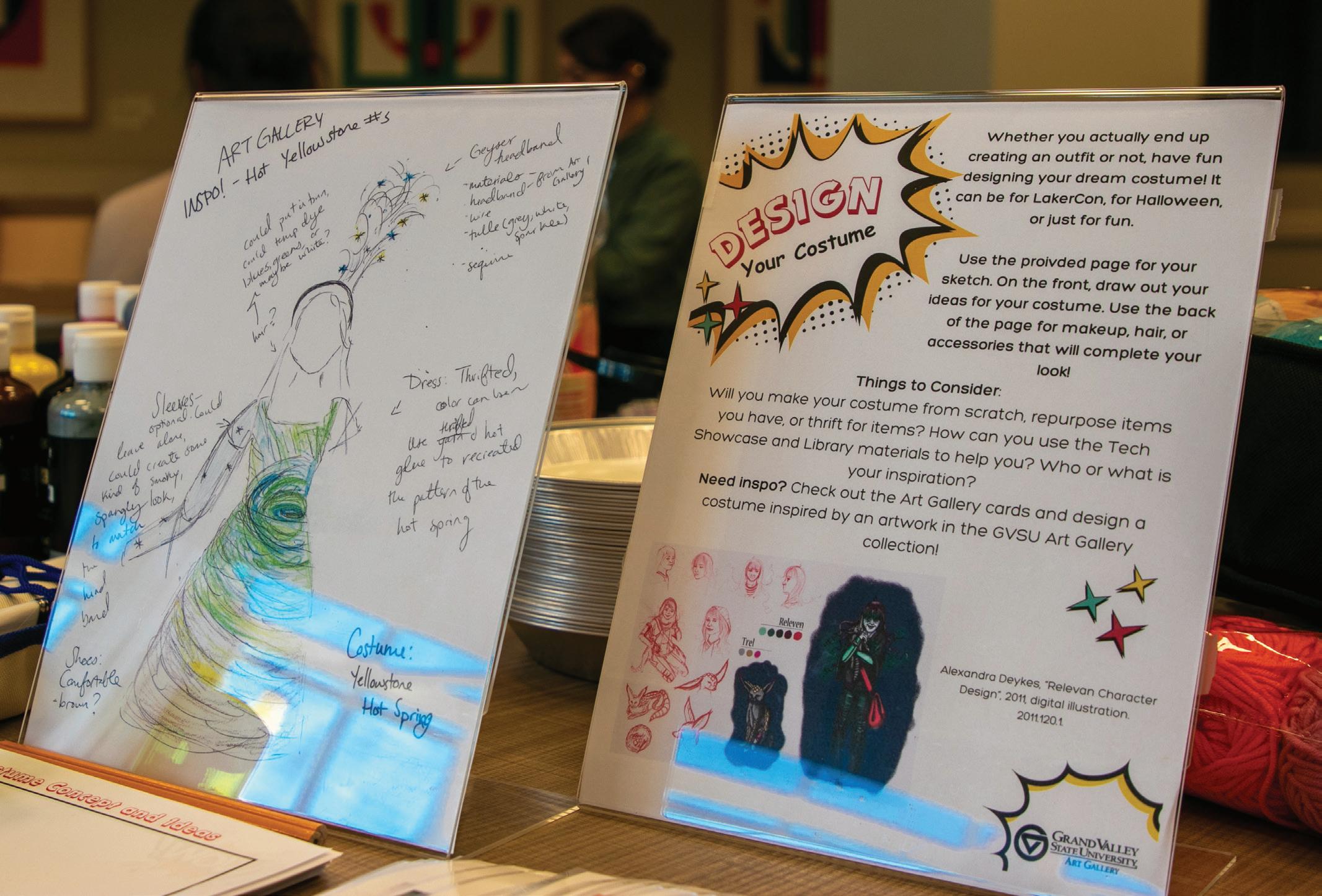
Digital Creator Lab, which provides access to podcasting, vlogging, video editing software and Adobe applications.
“Students, especially (freshmen), have so many passions and interests, and Cosplay Maker’s Circle attempt to give passionate students a space to express their creativity and make new friends,” Hackos said. “Students can benefit from each other, and from Stacey, who is so knowledgeable about sewing machines (and) headband projects.”
Laker Con will also host panels and presentations that celebrate and explore comics, as well as an artist market to showcase creations and offer items for sale. In addition, the convention will include activities and programs for making zines, screenings of comics-themed movies, portfolio reviews and discussions on the business of comics.
There will be many presenters at the Laker Con, such as acclaimed comic artist Brian Stelfreeze. Stelfreeze has worked for nearly every major U.S. comic publisher, and has created illustrations for DC Comics’ “Batman: Shadow of the Bat.” In addition, he was nominated for an Eisner award for his artwork in the 2016 revival of Marvel’s “Black Panther.”
Meanwhile, as the convention approaches, Cosplay Maker’s Circle will continue to encourage creativity, camaraderie and innovation in preparation for GVSU’s comic celebration.
IMAGINATION: With the Maker’s Circle, GVSU students have a place to create costumes with encouragement and confidence. GVL I RISHO WOOTEN
GVL I RISHO WOOTEN

GV volleyball takes all four games in Grand Rapids Classic tournament
BY DELANEY MILLER LANTHORNEDITORIAL@GVSU.EDU
The Grand Valley State University women’s volleyball team hosted and participated in the Hampton Inn and Suites Grand Rapids Downtown Classic tournament, which ran from Thursday, Sept. 12 to Saturday, Sept. 14.
The Lakers started the tournament against Northwood University (61). Northwood came out strong, dominating in the first set. Throughout, Northwood went on multiple three point runs and took the lead with an eight point run, winning the set 25-20. However, GVSU then took control in the second and third set, going on four point runs and winning the second set 25-10 and the third set 25-18.
Going point-for-point in the fourth set, Northwood came out on top, winning 28-26, and taking the Lakers into a fifth set. The Lakers began the fifth set with a four point run, and ended the set on a three point run, ultimately taking the fifth set 15-9.
Not only did GVSU take the 3-2 win against Northwood, they also dominated in kills, averaging about 12 kills per set. Leading the team was freshman outside hitter Grace Busold, who finished with 13 kills and 2 blocks, and senior setter Jordyn Gates
who finished with 10 kills, 32 assists and 4 blocks.
Head coach Jason Johnson described the element of unpredictability that’s present in tournaments.
“The reality is, you can’t prepare for them (tournaments), and so we’re just trying to figure out the little stuff, but it’s really about our side of the net at this time of the year” said Johnson.
Busold also shared her feelings about the importance of teamwork.
“You can just depend on every person out there to do their job,” Busold said.
“Everybody can evolve. You just have to work with your teammates, work with everybody and just outsmart.”
After a tough match against Northwood, the Lakers took on both Tiffin University and Missouri Western State University on Friday, Sept 13.
Starting in the first two sets against Tiffin, the Lakers dominated in both sets with multiple two-to-three point runs, winning the first set 25-18, and winning the second set 25-14. Starting in the third set, Tiffin managed to get ahead, running a six point lead, and ultimately taking the third set 25-19, pushing the Lakers to a fourth.
Starting in the fourth set, the Lakers ran a five point lead, keeping their lead and ultimately winning the set 25-23.
In the first set against Missouri, the Lakers had the lead until Missouri went on a four point run. However, the
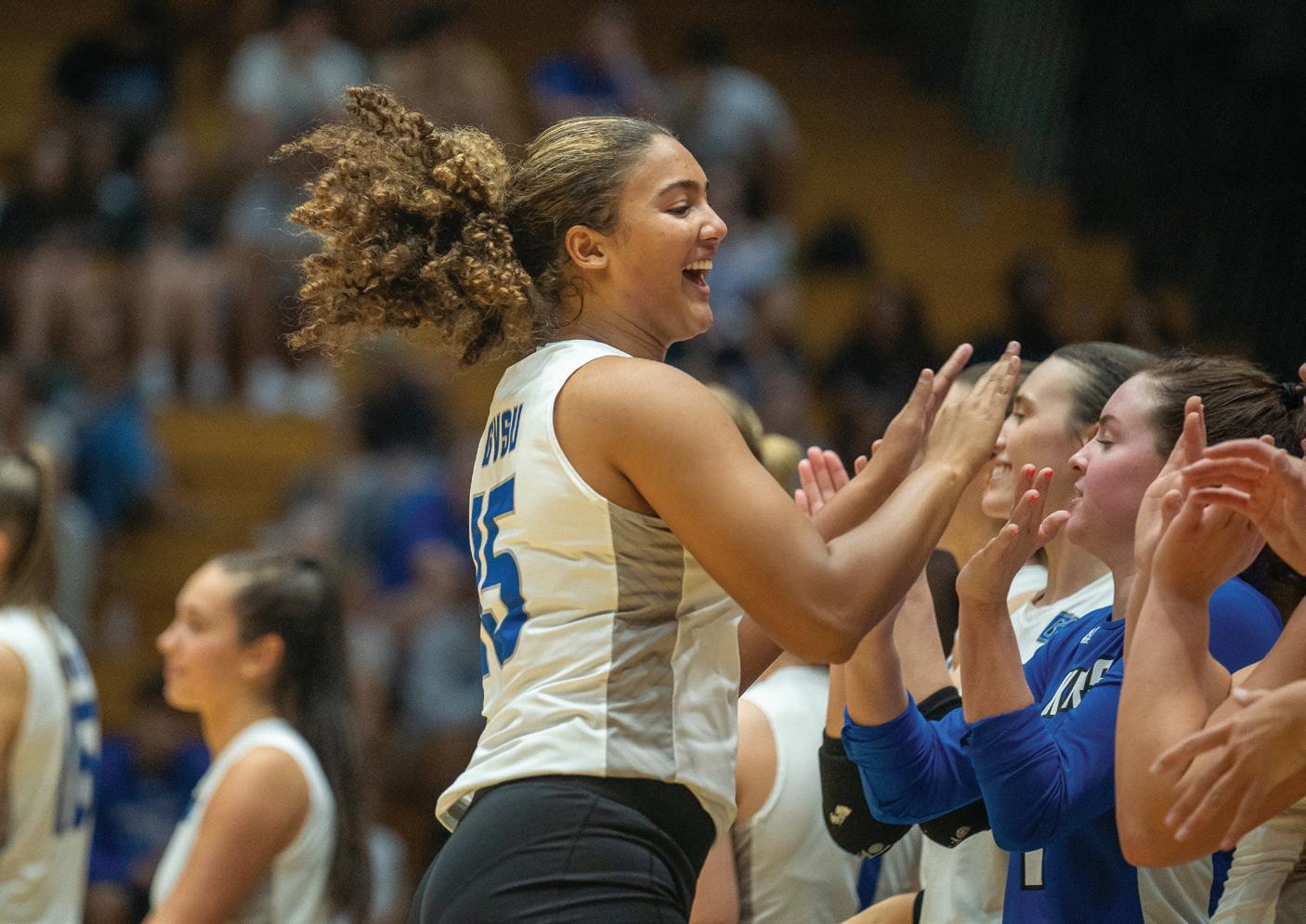
Lakers quickly bounced back and took over that lead on a six point run, taking the set 25-23. The Lakers dominated in both the second and third sets, taking the second set 25-18, and the third 2521. This earned them their first sweep in the tournament against Missouri.
Continuing into Saturday, Sept. 14, the GVSU Lakers took on Bemidji State University for their final game of the tournament. Starting in the first set, the Lakers went on two three point
runs, with a total of 14 kills, taking the first set 25-19. The Lakers then finished on top in the second set, 2518. Going into the third set, the Lakers came in with an immediate three point run, ultimately keeping themselves in the lead, and finishing the third set 2515, earning their second sweep of the weekend against Bemidji State. Finishing the weekend 4-0 and boasting an undefeated record, the Lakers will be taking on Ferris State
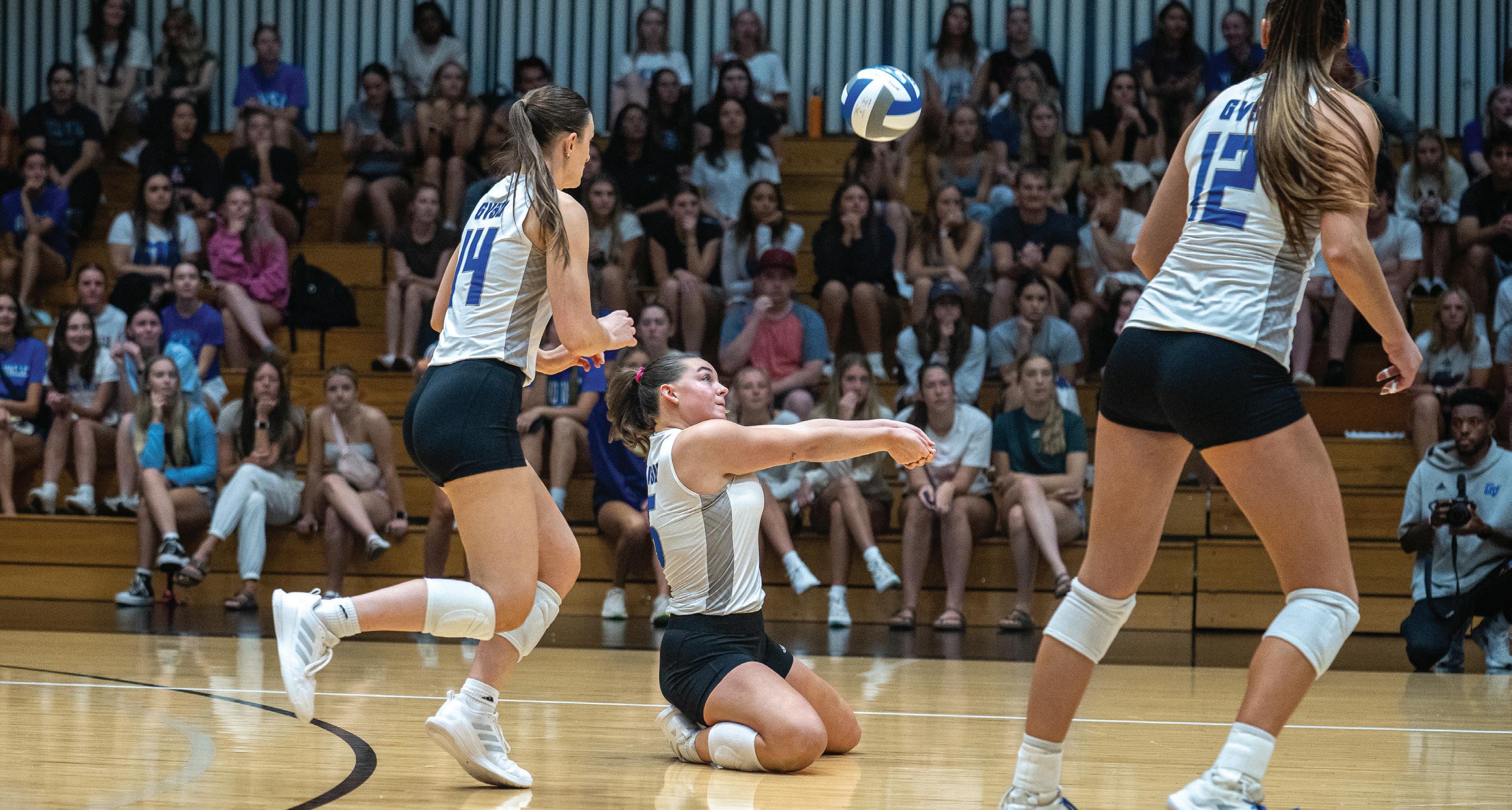
match against Northwood, the Lakers remained strong and won the second, third and fifth sets. GVL | MACAYLA CRAMER
DOMINATION: The team won all four of their weekend matches. GVL | MACAYLA CRAMER
A 16 | SPORTS

GV men’s and women’s golf begin seasons with Folds of Honor
BY GRIFFIN MISSANT LANTHORNEDITORAL@GVSU.EDU
Grand Valley State University men’s and women’s golf teams teed off the start of their seasons on Monday, Sept. 9. Both teams participated in the Folds of Honor Collegiate matchup at the Dunes Golf Club, located in Grand Haven. The men’s team finished eleventh, just falling outside of the top 10 after shooting 40 over par. The women weren’t far behind, as they ended up placing fourteenth, shooting 71 over.
The matchup is a major tournament, and competition was tough across the board. Several Division I schools participated in the tournament, such as the University of Alabama, the University of Texas and the University of Arizona.
“For the Folds of Honor, because it’s such a big event, all of our guys put a lot of pressure to perform, (and) a lot of pressure to compete against all those top players,” said the men’s golf head coach Gareth Lappin.
Graduate student Drew Coble

took charge for the Lakers on the men’s team. After sinking four birdies and shooting just three over par, he finished in a tie for fourteenth place. Other notable Lakers included juniors Bryce Wheeler and Charlie Cooley. Both had several birdies, and ended up finishing in a tie for forty-fifth place.
“All in all, (we’re) pretty disappointed as to where we finished on the leaderboard, but happy with what we took from it,” said Lappin.
Lappin emphasized the need for his team to be relaxed when playing.
“All of our guys are physically very capable of competing,” said Lappin. “If we
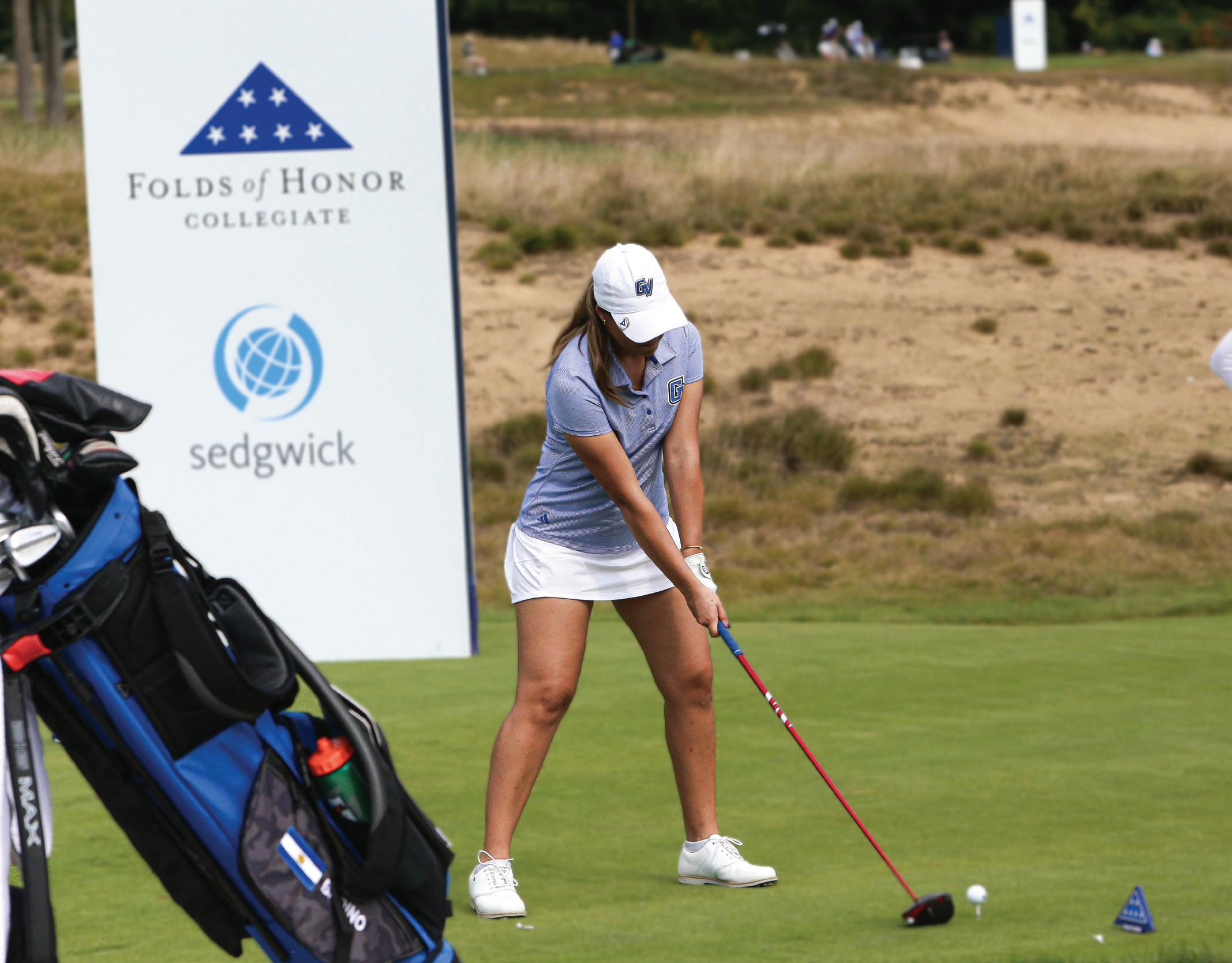
can be a little mentally better, that’s when our guys are going to be really good.”
Lappin also noted that being flawless is never a guarantee in golf, like in any sport.
“(It will be good) if we can be a little bit more patient, not feel as if we need to hit every shot perfect, and just know that there will be a lot of ups and downs throughout the course of a tournament,” said Lappin.
For the women’s team, it was senior Olivia Stoll who led the way. With a pair of birdies and shooting 10 over, she finished in a tie for twenty-ninth place.
Women’s head coach Rebecca Mailloux touched on the idea that being in a highly competitive field only helps performance. The GVSU women’s team played their match against the University of Arizona, who ended up winning the tournament.
“Overall (it was) an incredible experience for these ladies to play with the best in Division I, and alongside Arizona for two days,” said Mailloux. “They all took away something that will make them better in our upcoming season.”
After seeing the team’s performance, Mallioux was pleased that her team only got better as the tournament progressed. The first day, the women’s team shot 27 over par, and on the third and final day, they shot 18 over par.
Mallioux described the team’s short game as needing further practice. Arguably the hardest part of golf is chipping approach shots and putting-that is where holes are won or lost.
“The ladies recognized that’s the difference maker between those top players in Division I and us,” Mallioux said.
DRIVING: The men’s and women’s teams had their first drives on Monday, Sept. 9, and concluded on Wednesday, Sept. 11. GVL | ARCHIVES
COMPETE: The Grand Valley State University men’s and women’s teams competed in their first matches of the season. GVL | ARCHIVES
